THE GOLDEN AGE: Why was the Golden Age – SO Golden?
A few people have questioned me recently about my open use of the term “Golden
Age” to cover the majority of the 17th century into the early 18th.
So I thought to myself that a historical article on the use of the term would
be a wonderful idea for our little website – and would in addition serve to
explain my justified use of the term to define our own favored era.
One can do a simple search of the term and find dozens of definitions in
English.
From Wikipedia: “A golden age is a period in a field of endeavor when great
tasks were accomplished.”
From the Merriam-Webster Dictionary: Full Definition of GOLDEN AGE: “a period
of great happiness, prosperity, and achievement”
Examples of GOLDEN AGE:
- the golden age of art
- a golden age for…country
- timelines of history for differing countries that may have more than one
golden period…
First Known Use of the term GOLDEN AGE in English – 1555
Of course scholars most commonly know the Golden Age to be the great period of
philosophy and celebrated philosophers of classical ancient Greece.
So what are some of these other Golden periods or ages?
Because we are speaking and reading in English here (the language of modern
western history which defines the metaphor in whatever self gratifying manner
its own historians see fit to define their past – what’s the old phrase:
“History is written by the Victors”),
I think it appropriate to begin with the English.
ENGLAND:
The English have numerous Golden Ages but there is only one that is germane to my argument.
- The Golden Age of Bede
- The Golden Age of Elizabeth I
- The Golden Age of Victoria
Of course most modern Brits and even many Americans like to think of one of
the last two I list – as a British Golden Age. Why wouldn’t they? During the
final period Britain dominated the world – “The Sun never set on the British
Empire”.
However, the period I mentioned briefly that is almost ignored now, takes a
little digging to find – and I find it quite amusing that it has become such a
historical footnote now. In the final conclusion at the end of this article I
will tell you why I believe this era is not listed among those other Golden
Ages I listed above and why it is also so ignored generally in the history
books by modern English speaking peoples from the 19th century to the present.
But first, I must make my case that it was indeed a Golden Age on par with (if
not even greater than) the other Golden Ages mentioned.
So this lesser known Golden era I refer to is the Golden Age of Charles II –
more commonly known now as “The Restoration”.
This era is quite frankly extraordinary in every way possible to English
history. It is a period of incredibly talented and famous English composers,
poets, architects, artists, playwrights, philosophers, scientists, gentlemen,
and libertines.
Lets consider this time viewed by its own contemporary chroniclers – of which
several refer to their own time – halfway into the reign of Charles as “our
own Golden Age”.
Why? Two simple reasons I think:
REASON Number 1) Backlash and Resurgence from prior times,
and extraordinary persons of distinction:
Because the Puritans under “The Lord Protector” Oliver Cromwell, ruled England
with an iron hand for the twenty years prior to Charles II’s Restoration of the
Monarchy. Cromwell and the English Parliament had Charles I beheaded at the end
of the English Civil War. The Commonwealth of England came about as a result
and was viewed as a republic – with direct oversight by Cromwell (basically a
dictator). England had become a grim Puritan Protestant stronghold which
outlawed the theater and dominated England’s people with a strict code of
morality. Women (even nobility) were forbidden to wear the color red. It was
also frowned upon for men to wear any other color but black with a modest white
collar. The arts were frowned upon. Music in church services was even seen as
too stimulating and as being a distraction from the preaching of the word of God.
Is it any surprise then given this bleak backdrop that when Charles II came
home and the Monarchy was restored that the people rejoiced? The theaters were
reopened, people of every class again wore whatever colors they pleased and
the Puritans became a minority – many of them moving to the New World to
practice their restrictive religious beliefs.
Charles immediately set about proving to his people and to the world that he
was a great monarch. His reign is marked by immense extravagance and excess.
He hired artists and architects to transform his palace at White Hall into a
great Court and London into a great and enlightened city of the arts. Both
were accomplished during his reign. Grand models of London were poured over by
Charles who saw to every detail. Indeed it can be said that London received
the classical look it still enjoys today in many places, from Charles
transformation.
The great architect that was his visionary and the work horse of its
materialization into reality was Sir Christopher Wren. Wren is probably best
remembered now for his design and building of Saint Paul’s Cathedral,
constructed in the flowing and ordered style of classical revival that so
marked Baroque architecture. Sir Christopher Wren
One of the leading composers of the age was Henry Purcell. Purcell was quite
simply ahead of his time. Purcell influenced not only his contemporaries but
many later composers. Purcell often fuses the music of the earlier
Renaissance with the Baroque. He fuses simple songs with simple lyrics with
the most movingly beautiful accompaniment. These lyrics though usually simple,
often hold profound truth or morbid reminders of our own very temporary mortal
state upon the earth.
Peter Pett
Pett was an important English Master shipwright of the time and a key member
of the Navy board that determined and approved future ship designs and builds.
He came from a long line of shipwrights and his designs were extremely
innovative and widely imitated. Pett set the standard for English warship
design of the day and is most famous for the great English warship –
Sovereign of the Seas That ship
was one of the longest lived in history and enjoyed a long and distinguished
career. She survived all three Anglo-Dutch Wars and the Dutch put prize
bounties on her for captains that would attempt destroying or capturing her.
She was taken on several occasions but always retaken by the English by the
end of the battles. https://en.wikipedia.org/wiki/Peter_Pett
John Milton (1608 – 1674)
English poet, polemicist, man of letters, and a civil servant for the
Commonwealth of England under Oliver Cromwell. He wrote at a time of religious
flux and political upheaval, and is best known for his epic poem Paradise Lost
(1667), written in blank verse.
Milton’s poetry and prose reflect deep personal convictions, a passion for
freedom and self-determination, and the urgent issues and political turbulence
of his day. Writing in English, Latin, Greek, and Italian, he achieved
international renown within his lifetime, and his celebrated Areopagitica
(1644)—written in condemnation of pre-publication censorship—is among
history’s most influential and impassioned defenses of free speech and freedom of the press.
Thomas Hobbes (1588 – 1679)
https://en.wikipedia.org/wiki/Thomas_Hobbes
English philosopher, best known today for his work on political philosophy.
His 1651 book Leviathan established social contract theory, the foundation of
most later Western political philosophy. Though on rational grounds a champion
of absolutism for the sovereign, Hobbes also developed some of the
fundamentals of European liberal thought: the right of the individual; the
natural equality of all men; the artificial character of the political order
(which led to the later distinction between civil society and the state); the
view that all legitimate political power must be “representative” and based on
the consent of the people; and a liberal interpretation of law which leaves
people free to do whatever the law does not explicitly forbid.
He was one of the founders of modern political philosophy and political
science. His understanding of humans as being matter and motion, obeying the
same physical laws as other matter and motion, remains influential; and his
account of human nature as self-interested cooperation, and of political
communities as being based upon a “social contract” remains one of the major
topics of political philosophy.
In addition to political philosophy, Hobbes also contributed to a diverse
array of other fields, including history, geometry, the physics of gases,
theology, ethics, and general philosophy.
John Locke (1632 – 1704)
English philosopher and physician regarded as one of the most influential of
the Enlightenment thinkers and known as the “Father of Classical Liberalism”.
Considered one of the first of the British empiricists, following the
tradition of Sir Francis Bacon, he is equally important to social contract
theory. His work greatly affected the development of epistemology and
political philosophy. His writings influenced Voltaire and Rousseau, many
Scottish Enlightenment thinkers, as well as the American revolutionaries. His
contributions to classical republicanism and liberal theory are reflected in
the United States Declaration of Independence.
Locke’s theory of mind is often cited as the origin of modern conceptions of
identity and the self, figuring prominently in the work of later philosophers
such as Hume, Rousseau, and Kant. Locke was the first to define the self
through a continuity of consciousness. He postulated that, at birth, the mind
was a blank slate or tabula rasa. Contrary to Cartesian philosophy based on
pre-existing concepts, he maintained that we are born without innate ideas,
and that knowledge is instead determined only by experience derived from the
senses and perception.
It should also be mentioned that Locke was rejected by Restoration England and
he was exiled to the Dutch Republic where he wrote many of his great works. He
returned to England with Queen Mary (Stuart) wife of the Dutchman and new
English King William III of Orange at the beginning of the Glorious Revolution in 1688.
Sir Isaac Newton (1642 – 1726)
Newton is one of the greatest minds and scientists of history. His
contributions to science and mathematics are undeniable. Newton’s “Principia”
formulated the laws of motion and universal gravitation, which dominated
scientists’ view of the physical universe for the next three centuries. By
deriving Kepler’s laws of planetary motion from his mathematical description
of gravity, and then using the same principles to account for the trajectories
of comets, the tides, the procession of the equinoxes, and other phenomena,
Newton removed the last doubts about the validity of the heliocentric model of
the Solar System. This work also demonstrated that the motion of objects on
Earth and of celestial bodies could be described by the same principles. His
prediction that Earth should be shaped as an oblate spheroid was later
vindicated by the measurements of Maupertuis, La Condamine, and others, which
helped convince most Continental European scientists of the superiority of
Newtonian mechanics over the earlier system of Descartes.
Newton built the first practical reflecting telescope and developed a theory
of colour based on the observation that a prism decomposes white light into
the many colours of the visible spectrum. He formulated an empirical law of
cooling, studied the speed of sound, and introduced the notion of a Newtonian
fluid. In addition to his work on calculus, as a mathematician Newton
contributed to the study of power series, generalized the binomial theorem to
non-integer exponents, developed a method for approximating the roots of a
function, and classified most of the cubic plane curves.
Samuel Pepys (1633-1703)
English naval administrator and Member of Parliament who is now most famous
for the diaries he kept for a decade while still a relatively young man.
Although Pepys had no maritime experience, he rose by patronage, hard work,
and his talent for administration to be the Chief Secretary to the Admiralty
under both King Charles II and King James II. His influence and reforms at the
Admiralty were important in the early professionalization of the Royal Navy.
Pepys organized the Royal Navy into the great instrument it was later known
for the world over by reforming and reorganizing its training, officer
selection and promotion processes, refit procedures, ship replacement, new
building design approval, procurement and resupply.
Samuel Pepys
John Wilmot, 2nd Earl of Rochester (1647 – 1680)
English poet, playwright, and courtier of King Charles II’s Restoration court.
The Restoration reacted against the authoritarianism of the Puritans and
Rochester was the embodiment of the new era. He is as well known for his
rakish lifestyle as his poetry, although the two were often interlinked. In
1669 he committed treason by boxing the ears of Thomas Killigrew in sight of
the King, and in 1673 he accidentally delivered an insulting diatribe to the
King. He was considered one of the great wits of the age. He died at the age
of 33 from venereal disease.
Wilmot was not just a man of letters and wit. He was a soldier and officer who
showed great bravery in battle during the Second Anglo-Dutch War. He served
under Lieutenant Admiral Lord Edward Montegu(Earl of Sandwich), Admiral Thomas
Teddeman and the famous Admiral Sir Edward Spragge. Only halfway into the war
Wilmot was a war hero. He was decorated, given a 1000 pound pension(an immense
amount at that time) and given the best quarters in Whitehall Palace close to
the King. He became a favorite thereafter of the King although the two were
often at odds because of Rochester’s acts and behavior.
Rochester’s contemporary Andrew Marvell described him as “the best English
satirist,” and he is generally considered to be the most considerable poet and
the most learned among the Restoration wits. His poetry (much of it censored
during the Victorian era) enjoyed a revival from the 1920s onwards. During his
lifetime, he was best known for “A Satyr Against Reason and Mankind”, and it
remains among his best known works today.
John Wilmot 2nd Earl of Rochester
Nell Gwynn (1650 – 1687)
Called “pretty, witty Nell” by Samuel Pepys, she has been regarded as a living
embodiment of the spirit of Restoration England and has come to be considered
a folk heroine, with a story echoing the rags-to-royalty tale of Cinderella.
She was the most famous Restoration actress and possessed a prodigious comic
talent. Gwyn (who was one of King’s favorite mistresses) had two sons by King
Charles: Charles Beauclerk (1670–1726); and James Beauclerk (1671–1680). The
surname of her sons is pronounced ‘Bo-Clare’. Charles was created Earl of
Burford and later Duke of St. Albans.
AND….
Reason Number 2) Under Charles II many historians argue that England was
finally brought into “Empire”. I believe this is a valid observation. The 17th
century saw a global explosion of trade and expansion by the seafaring
European nations that is unmatched in history. This early global race for
“empire” led to long standing conflicts and rivalries between the powers of
western Europe. The struggle only intensified throughout the century as the
trading leaders emerged. Throughout the century England expanded her merchant
marine fleets, navy, and colonial possessions. However, she was increasingly
at odds with her seemingly insignificant neighbor and unlikely competitor
across the English Channel – the United Provinces of the Netherlands. By the
middle of the century England and the Netherlands had emerged as the two most
powerful commercial opponents with the largest navies. This led to the
inevitable Anglo-Dutch trade wars which saw the largest and longest (age of
sail) naval battles in history.
Why had little Holland become such an impediment to England’s leadership and
rise as a world power? The Netherland’s unstoppable early industrialization
and trading expansion made her the center of European banking and finance
during the final decades of the Eighty(Thirty) Years War which essentially
broke the back of Spanish Imperial power both on the continent and abroad.
This decline in Spanish power allowed the other powers to muscle in on Spain’s
colonial possessions and world trade. Since the beginning of the 17th century,
the Dutch had been aggressively exploring, adding far flung colonies and
subduing the world’s trade. They had supplanted the Portuguese in the East
during the Dutch-Portuguese War (1601-1661). The Portuguese held only the
great fortress of Goa and Bombay at the conclusion of the war. The Dutch
seized Brazil in 1629-1630 and heavily colonized Surinam in the same decade.
They founded the Dutch West India Company and established the prosperous
colony of New Amsterdam on the North American seaboard.
The Dutch began to be seen as a menace by a resentful England, which looked
for any excuse to curb and check growing Dutch commercial power. Between the
long passed Amboina incident and Tromp failing to salute (dipping his flag as
the fleets passed) Admiral Robert Blake as he escorted a merchant fleet
through the English channel, the English got their war when Blake’s fleet
opened fire on Tromp. It was a costly war which achieved almost nothing.
During this first Anglo-Dutch War the English may have won in home waters
during the final year of the war, but the first two years had been disastrous.
It was also very costly abroad throughout and a disaster for the English
commercially. The Dutch lost some 1200 ships to privateers. That amount
doubled the size of the English merchant marine. However, it barely
compensated for England’s own losses to the Dutch. In addition, it was not
nearly so damaging to the Netherlands which possessed a merchant fleet of
between 10 to 15 thousand ships by that time. To make matters worse, the Dutch
seized English possessions abroad. The war was unpopular with both sides who
saw Spain as the great beneficiary. One of the key causes of that war was
Dutch trade with English colonies. The English merchants didn’t feel like they
could compete and many hired Dutch ships and captains under English colors.
This caused parliament to pass the first of the famous “Navigation Acts” which
forbade Dutch ships from carrying English goods to English colonies. By the
end of the war the acts were relaxed to an extent as part of the peace of
Westminster.
In addition to the competition in trade, a sort of arms race had developed
between the two countries as well. Since King Henry VIII, the English had
experimented with and developed more and more advanced iron cannon. The
English enjoyed the best iron ores in all of Europe. Iron was known to be
inferior to bronze which was the preferred material for cannon in that time.
Bronze did not rust aboard ships, it did not foul like iron, it did not heat
up as fast and cooled much faster – so faster rates of fire could be
maintained. Bronze was also much more reliable with a much longer life than
iron guns. It was not uncommon for bronze guns to be recycled for generations
of ships. It would not be out of the ordinary for a ship built in 1740 to
mount guns made in 1640 which had seen service on several different ships in
between. Bronze guns rarely blew up/failed while iron guns were known to fail
often. In addition, an equivalently bored iron gun weighed more because more
iron was required to reinforce the bore so the gun was larger and less compact
- even though it fired the same size/weight of shot. However, bronze guns were
exorbitantly more expensive than iron guns, costing as much as 10 to 20 times
more. During the Elizabethan period English gun-making was a closely guarded
defense secret and the sale of guns was prohibited to foreign governments. By
1580 England possessed the best iron guns in Europe and by 1620, these guns
were considered to be almost as good as bronze guns but produced at a fraction
of the cost. By the early 17th century this policy had relaxed a bit and
England was selling guns in clandestine deals to Holland. The Dutch purchased
the guns for use in their war against Spain but also to try to unravel the
secrets of their manufacture. The Dutch spied on England’s gun works and
learned their secrets. Once the cat was clearly out of the bag by the 1630s,
England began selling guns to everyone (even her Catholic enemy Spain) in
order to compete with her trade rival Holland.
By Charles II’s time, the Dutch had grown their merchant fleets to between
20,000 – 25,000 ships. The English possessed roughly a tenth of that with
estimates by Lord Clarendon of fewer than 1500 English merchantmen abroad.
Clarendon urged that England build more ships and through parliament was able
to reinstate the Navigation Acts and add even more restrictive measures to
them. English merchants however found loopholes and continued to hire Dutch
ships, but with mixed English/Dutch crews and English captains flying English
colors. A second Dutch captain (1st officer) was most often aboard these
ships. They were supposed to have a majority of English sailors aboard but
this was often not the case and Dutch crews would speak and try to “act”
English when they were boarded for inspections.
Even though Charles II had enjoyed the safety and hospitality of the Dutch
during his exile in the Netherlands, he militantly sought to subvert them when
he came to power. As I described above, his reign was one of over-spending and
extravagance – of an amazing flowering of art and culture in England. However,
his reign is one of the most militant of any English monarch in history. For
the majority of his reign, England was at war.
Charles II sought to offer competition and thwart Dutch colonial efforts
around the globe. Fueled in this pursuit by his loyal minister Lord Clarendon
(who believed that the Dutch would destroy England if they continued to grow
globally unchecked), Charles funded venture after venture to undue Dutch
interests. Several new dockyards and hundreds of new ships were funded by
Charles’ government – both for trade and for war. Charles attempted to compete
with the Dutch in Guinea and West Africa, in North America, in the Caribbean,
Surinam, and even in the Dutch dominated East Indies by establishing spice
factories and forts at Amboina, and the tiny reef islands of Ai, and Run.
Indeed one of the causes (or pretexts for war) of the Second Anglo-Dutch War,
was the same as the 1st Anglo-Dutch War. For years the English felt like the
so called massacre at Amboina had gone unrevenged and since that time (1623)
the Dutch held Amboina as a their possession. This is fascinating given
today’s propaganda and common false pretexts for war that our modern
governments feed to the public, justifying the reasons for going to war.
Amboina was a battle cry for the English War Hawks prior to both wars.
Pamphlets and polemics exaggerating the Dutch quelling of the English
attempted coup to overtake Amboina using master-less Japanese Samarai mercenaries
(“ronin”), claiming that the surviving English citizens were tortured and
mutilated – these flyers were illustrated with gruesome woodcuts displaying
these supposed heinous acts. These exaggerations that had occurred decades
before, enraged the English public and the English got their wars. The English
ultimately won the 1st Dutch War although their global trade had nearly
collapsed by the end of it.
However during the second war only a few years later, the Dutch were a little
too large of a bite for Charles to digest. Not only did the English lose
horribly in their colonial possessions, but most of their trading ships were
taken or destroyed by Dutch privateers. In addition, the English lost the
decisive battles of the war at home this time around against a new, better
designed, better organized, and better led Dutch Confederate fleet. The final
humiliation was that the war had drained the English treasury to the point of
bankruptcy. With English trade virtually destroyed by the Dutch and the
English economy on the verge of collapse, the navy could not even be paid. The
fleet was laid up at Chatham and the English sued for peace. As the peace
talks were deliberately delayed by the English jockeying for the best
agreement possible under horrible circumstance, the frustrated Dutch
leadership became angry and sought to speed up the process by blockading the
Thames for over a month.
With the English still unmoved – the Dutch (led by a disgruntled English pilot
who had not been paid in some time), moved a fleet up the Medway, destroyed
Sheerness, broke the chain-boom there and continued up-river – destroying the
Royal dockyards at Chatham and burning the anchored English capital ships
there. They saved two, which they towed back home to Amsterdam – the English
flagship Royal Charles and the HMS Unity (which was the renamed Dutch warship
Eendracht that had been captured by the English in 1665).
This bold raid forced the English into quick peace concessions. Charles may
have lost the war but he was undeterred and continued to plan the ruin of the
Dutch state. His ministers (especially Clarendon) believed if they could just
defeat the Dutch, they could claim their possessions and wealth as their own.
Efforts were redoubled and funding acquired to rebuild the battered English
Navy and Merchant Marine.
After six years of preparation and rebuilding, Charles deliberately plotted to
turn several powerful German Princes and the French against little Holland –
finally bringing the combined fury of this alliance against the Dutch in 1672
during the Third Anglo-Dutch War and Franco-Dutch War. For the Dutch 1672 was
known as the Year of Troubles “rampjaar” (literally translated “Disaster
Year”). However, the Dutch through skillful diplomacy brought several powerful
German Princes into the war on their side and won several victories against
the French on land and many victories at sea. They broke the dykes in
strategic places to trap foreign invaders and limit their advance. At sea
DeRuyter succeeded in defeating the English and French fleets combined in four
great decisive victories – the Battles of Schooneveld(1st and 2nd), Solebay
and the Texel. This war was by far the most devastating for Charles. The
English lost most of its merchant fleet to Dutch privateers. Over 500 prizes
were brought into Amsterdam alone. Charles died never having overcome the
Dutch.
After Charles’ death his weak and openly Catholic brother James II took over.
A group of English nobles (The Immortal Seven Immortal 7
https://en.wikipedia.org/wiki/Invitation_to_William) approached Prince William
of Orange With an invitation to invade England and depose the absolute
monarchy. William was offered the crown jointly with his English wife Princess
Mary and with the stipulation of a parliamentary government. William who had
long been assembling an allied coalition against Louis XIV of France needed
the English and it was for primarily this reason that he launched a massive
Dutch invasion of England. The invasion force consisted of 463 ships and
around 50,000 Dutch and hardened Danish mercenaries. It was over twice the
size of Parma’s army and the famous Spanish Armada that had attempted invasion
a century before. This was not a bloodless revolution as many historians would
have us believe. There was loyalist military resistance and notable small
battles occurred both on the march to London and after the city was taken. The
period of William and Mary had begun. Not only was William able to keep the
Sun King at bay for over two decades after, but his reforms brought England
into the modern age. The stock market, organized central banking(The Bank of
England), the insurance industry, organization, reforms and standardization in
government, and a new age of parliamentary process(completely parted from any
church influences), were William’s Dutch legacy to Great Britain.
In 1702 William died and the last of the Stuarts came into power. Queen Anne
effectively ruled during the War of Spanish Succession. Perhaps her greatest
contribution to Britain and history was her appointment of John Churchill the
Duke of Marlborough
https://en.wikipedia.org/wiki/John_Churchill,_1st_Duke_of_Marlborough to the
rank of Captain-General of Britain’s Armies. Churchill was an able veteran of
notable bravery that had learned his trade from one of the greatest generals
of history – Marshall Turenne of France. Much of Marlborough’s early career
was spent fighting on the side of the French. Indeed Louis XIV recognized and
awarded him for his bravery and gave him a colonel’s commission in the French
Army. Ironically, Marlborough’s greatest victory was against the French. In
August 1704 Marlborough won his famous victory at Blenheim. His stealthy march
from the Low Countries to Bavaria (250 miles in 6 days) and his brilliant
tactics set the benchmark by which subsequent commanders would be measured
against and would emulate until Napoleon. Blenheim is one of the great battles
of history and one of the greatest feats of British arms. Marshal de Saxe,
Frederick the Great and Napoleon himself would study Blenheim before their own
illustrious careers occurred. The discipline, the logistics (buying supplies
rather than just taking them), organized signaling and tactical focus (economy
of force and weighting main effort when outnumbered) marked the warfare of a
new age and effectively waved adieu to the Golden Age which preceded. Louis
was again put in check for the last time. The balance of power was restored to
the allies and the rise of Britain as the next great global super power was
secured.
Indeed, this was a Golden Age for England. She went from being a mildly
important middling commercial and military European power at the beginning of
the 17th century, to becoming one of the greatest trading nations and military
empires on earth by the end of it. (Possibly and arguably THE greatest power
on the planet).
….and now we will take a look at the other major players during the Golden
Age.
FRANCE:
In France as well we also find the makings of a Golden Era that their
historians openly recognize and embrace. Indeed France’s own King, Louis XIV
was one of the longest living kings in history with the longest reign in
history – a 72 year reign beginning when he was five years old. His symbol was
the sun itself and lent to his pseudonym “The Sun King”. It was not only he
that saw himself in this way, it was the French people and aristocracy as
well. Louis thought of himself as literally second only to God. He believed
that his divine calling was to establish France as the greatest and most
powerful empire on earth. That power would not only manifest itself in
military might, but also in the arts.
French culture was the envy of Europe and was imitated everywhere and at every
court across the continent. Indeed it was considered proper in most places to
speak French at court and young blue bloods were tutored in it at a young age
whether in England or deep in the heart of Poland or Germany. French was
considered the language of diplomacy as well and when generals and staffs of
opposing armies sat down to parley, it was French they spoke to one another –
even when German faced Swede or Dutchman faced Spaniard.
French chateauesque and neo-classical architecture was imitated as well in
many places. Their food and their music were of great influence everywhere one
traveled in Europe. The French had a unique version of the baroque that is
nowhere better illustrated than by their great composers of the day. While the
Germans dominated the music scene a century later, it was the French and
Italians that were most influential in the 17th century. Composers like Rameau
and Lully presented grand works which reflected the greatness of the French
nation and aristocracy. Bright coronets and booming timpani were typical of
these musical offerings.
In music the French had some of the greatest composers of all time whose music
reflects the grandeur of France, its culture, its King and its people AND the
times that WERE the Golden Age.
Jean-Baptiste Lully
https://en.wikipedia.org/wiki/Jean-Baptiste_Lully was an Italian-born French
composer, instrumentalist, and dancer who spent most of his life working in
the court of Louis XIV of France. He is considered the chief master of the
French baroque style. He was described as “the prince of French musicians, …
the inventor of that beautiful and grand French music, such as our operas and
the grand pieces for voices and instruments that were only imperfectly known
before him. He brought it [music] to the peak of perfection and was the father
of our most illustrious musicians working in that musical form. … Lully
entertained the king infinitely, by his music, by the way he performed it, and
by his witty remarks. The prince was also very fond of Lully and showered him
with benefits in a most gracious way.”
https://www.youtube.com/watch?v=o8fCy1Jyu94
Jean-Philippe Rameau
https://en.wikipedia.org/wiki/Jean-Philippe_Rameau was one of the most
important French composers and music theorists of the Baroque era.[1] He
replaced Jean-Baptiste Lully as the dominant composer of French opera and is
also considered the leading French composer for the harpsichord of his time.
Joseph Nicolas Pancrace Royer
Royer became “maître de musique des enfants de France”, responsible for the
musical education of the children of the king. Royer directed the Concert
Spirituel and the Paris Opéra during from the 1720s onward, writing six operas
himself, of which the best known is the ballet-héroïque Zaïde, reine de
Grenade.
French playwrights of the era were some of the best of all time and certainly
the most complex comedies and tragedies of the Golden Age entertained the
affluent in Paris through the plays of Moliere, Racine and Corneille.
Moliere: Jean-Baptiste Poquelin
Best known by his stage name Molière, he was a master French playwright and
actor who is considered to be one of the greatest masters of comedy in Western
literature. Among Molière’s best known works are The Misanthrope, The School
for Wives, Tartuffe, The Miser, The Imaginary Invalid, and The Bourgeois
Gentleman. He is considered one of the masters of parody and subtle pragmatic
truth introduced into comedic art in such a way that it can poke fun at human
hypocrisy and the evils that exist while still being overtly inoffensive.
Because of this intelligence in the comedy, many have attributed a
philosophical nature and genius to his work. In a time where people took
offense to almost everything, several of Moliere’s comedies were considered
offensive to the ruling class and Moliere (the favorite playwright of Louis
XIV) was not only protected by the King himself but his troupe was also
directly sponsored by Louis. This fact alone shows a progressive and open mind
in the person of the King who has been labelled an ego-maniacal despot by many
modern western historians.
Jean Racine
Jean-Baptiste Racine was a French dramatist, one of the three great
playwrights of 17th-century France (along with Molière and Corneille), and an
important literary figure in the Western tradition. Racine was primarily a
tragedian, producing such many examples of neoclassical perfection. Racine’s
plays are renowned for elegance, purity, speed, and fury. Racine’s dramaturgy
is marked by his psychological insight, the prevailing passion of his
characters, and the nakedness of plot and stage.
Pierre Corneille
https://en.wikipedia.org/wiki/Pierre_Corneille
In science and philosophy France had her fair share of famous Golden Age
intellects in Rene Descarte, Blaise Pascal and Pierre De Fermat.
Blasie Pascal
https://en.wikipedia.org/wiki/Blaise_Pascal
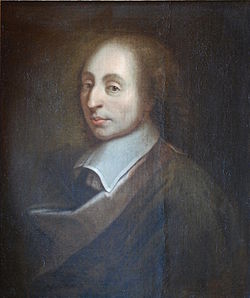
Blaise Pascal was a French mathematician, physicist, inventor, writer and
Christian philosopher. Pascal’s earliest work was in the natural and applied
sciences where he made important contributions to the study of fluids, and
clarified the concepts of pressure and vacuum by generalizing the work of
Evangelista Torricelli. Pascal also wrote in defense of the scientific method.
He (with Schickard and Napier) is one the first inventors of a practical
calculation machine. He built 20 finished machines (called Pascal’s
calculators and later Pascalines). Pascal was an important mathematician,
helping create two major new areas of research: he wrote a significant
treatise on the subject of projective geometry at the age of 16, and later
corresponded with Pierre de Fermat on probability theory, strongly influencing
the development of modern economics and social science. His two most famous
and enduring religious/philosophical works are the Lettres provinciales and
the Pensées. He also wrote an important works on the arithmetical triangle and
on the cycloid and its use in calculating the volume of solids.
Pierre de Fermat
https://en.wikipedia.org/wiki/Pierre_de_Fermat
Pierre de Fermat was a French lawyer at the Parliament of Toulouse and a
mathematician who is given credit for early developments leading to
infinitesimal calculus, including his technique of adequality. In particular,
he is recognized for his discovery of an original method of finding the
greatest and the smallest ordinates of curved lines, which is analogous to
that of the differential calculus, then unknown, and his research into number
theory. He made notable contributions to analytic geometry, probability, and
optics. He is best known for Fermat’s Last Theorem.
In France, the Reformation had been brutally suppressed. The Huguenot Protestant
minority was either butchered or exiled. The aristocracy continued to rule
with the Catholic Church fully empowered by their sides. This strengthened
both the monarchy and centralized government. Indeed it could be said that the
Church exercised such strong control that Cardinal Mazarin and Cardinal
Richelieu were almost seen as kings in their own right.
Concerning war, the French possessed the largest and strongest military
throughout the Golden Age. However France suffered in terms of providing it
with the best arms. To begin with France possessed the most inferior iron ores
on the continent. Secondly (with small exceptions) they did not possess the
skilled craftsmen necessary to produce quality arms on a mass scale. Many of
the Huguenots possessed such knowledge and skill but the persecutions after
the St. Bartholomew’s Day massacre became so bad that the majority of
Huguenots fled France for the Netherlands. They continued to until the Edict
of Fontainebleau in 1685 when Protestantism was outlawed completely. The
remaining Huguenots then converted or fled in masse for the next 20 years. The
French became very dependent upon their neighbors for the supply of reliable
arms. The United Provinces of the Netherlands supplied France with the vast
majority of her cannon, arms and warships for over fifty years. The Dutch
became the great arms traders of the day founding, financing, operating,
expanding and providing technical labor to the German foundries at Wetzlar,
Asslar, and Marsburg, the Swedish Gun industry (which eventually became the
best in Europe), and the almost legendary Russian Gunworks at Tula.
Louis’ military architect, Vauban, The Great Vauban became famous for his nearly impregnable
He brought modern warfare to a new pinacle making towns and forts nearly
impossible to take. Concerning siege, Vaubaun could often calculate to the day
when the town or fortress would fall when they followed his plan. Not only a
great siege engineer he was also one of the great generals of the day. As with
so many other notable gentlemen of the age Vauban was a “Renaissance man”, an
expert in philosophy and economics as well as a military man. Most of his
fortifications still stand as a testament of his genius and the extraordinary
chapter that was the Golden Age.
Jean-Baptiste Colbert Jean-Baptiste Colbert
supported the royal spending as much as possible, preventing France from going
bankrupt in all her various wars.
Colbert founded the Academy of Sciences (now part of the Institut de France),
the Paris Observatory, which he employed Claude Perrault to build and brought
Giovanni Domenico Cassini (1625–1712) from Italy to superintend, the Academies
of Inscriptions and Medals, of Architecture and of Music, the French Academy
at Rome, and Academies at Arles, Soissons, Nîmes and many other towns. He
reorganized the Academy of Painting and Sculpture which Mazarin had
established.
It could also be said that France possessed the greatest general of the day in
Henri the Vicomte de Turenne
The Great General Henri Turenne
Turenne was the grandson of Prince William the Silent and learned his trade in
the employ of the great Dutch general Prince Maurice of Nassau. He quickly
showed his aptitude and bravery and soon earned him a captaincy based on
reputation – not birth. In addition Turenne was raised Huguenot and was a
knowledgeable man of faith fiercely devoted to Protestantism for most of his
life. During the 1630s, his family persuaded him to come into the service of
the King of France which he did (although he did still continue to fight for
the Prince of Orange occasionally). He quickly ascended the ranks being
promoted to Marshal de Camp (equivalent to Major General) after leading the
assault during the siege of La Mothe. Always leading and never afraid, his
courage was undeniable and coupled with sound strategy won him victory after
victory. He rose to become the Marshal General of France – one of only six men
in history to ever achieve that rank. He was a favorite of Louis XIV who
believed his armies were unbeatable as long as Turrenne led them. Turenne
fought alongside some of the great generals of the time including the Great
Conde. He began his career for France fighting in the final battles of the
Thirty Years War. He opposed the King during the first half of the French
Civil War(The first war of the Fronde) but was forgiven along with most of the
other aristocrats that had taken up arms against the King. He fought as a
royalist in command of the King’s army during the Second War of the Fronde. He
practically crushed the entire rebellion and subsequently retook Paris for the
King defeating the Great Conde at the Battle of the Faubourg Saint Antoine
(1652).
He again showed his great aptitude for war fighting against the Spaniards in
the Franco-Spanish wars(1635-1659). In 1668 Turenne converted to Catholicism
at the continued requests of Cardinal Richelieu. This was not a fully
politically motivated decision. Turenne was fiercely devoted to both France and
his King. In the years prior to his decision, plots against the government and
assassination attempts against the ruling class were always from protestant
dissenters. Many letters were written back and forth between Turenne and his
protestant wife throughout the 1650s/60s discussing possible conversion to
Catholicism based on reconciliation of certain doctrines according to their
consciences. One of the key points was that Protestantism had become too
fragmented and could not agree on core doctrinal differences among the
splinter groups. Turenne fought against the Dutch during the Franco-Dutch war
(1672-1675) rapidly advancing to the gates of Amsterdam almost unopposed.
Bitter Dutch resistance forced Turenne to get his army to higher ground when
the Dutch broke the dykes to deny the French access to many key strategic
points. Numerous fierce and indecisive battles for individual cities ensued
and it was during the siege of Turkheim that Turenne earned a reputation of
brutality for allowing his troops to loot the city and massacre the
population. This marked both the low point and beginning of the end of the
great general’s career. Turenne was killed by a cannonball during the first
barrage of the Battle of Salzbach(1675). Among Turenne’s victories are
Breisach, “Route de Quiers”, the Italian Campaign of 1639-40, Freiburg,
Phillipsburg, Allerheim, Zusmarshausen, Battle of the Faubourg Saint Antoine,
Rethel, Sainte-Menehould, Mouzon, Arras, Battle of the Dunes, Battle of
Enzheim, and the Sack of Turkheim.
France under Richelieu poured millions into it’s navy and was determined not
to be dependent upon the Netherlands for the majority of its ships and guns
during the last quarter of the century. By 1670 France had cut off almost all
trade with the Netherlands and exercised protectionist economic policies.
Colbert ensured that the newest ships in France’s arsenal were now completely
French in both design and construction, rather than Dutch and counted among
the largest and most beautiful ever built. The largest warship on earth at
that time was La Soleil Royal – named in tribute of her patron “The Sun King”.
In addition, France had set up numerous new armories.
However, even resorting to desperate spying upon the English to learn their
methods of iron gun making and bringing in thousands of skilled technicians
from England, Holland and Sweden – most of the French guns continued to blow
up during testing due to poor iron mixtures. Colbert became despondent over
the situation and demanded the gun makers stop casting guns with fancy
decorations – believing that this was not only an unnecessary extra expense for
a gun that would likely blow up anyway, but also because he thought the extra
decorative material might be part of the problem. Even though it was NOT part
of the problem, after this change and dramatic shift in gun design and
manufacture, French guns were always made more plainly and compact than any
other country in Europe up to modern times. Finally in the mid 1670s the
armories at Perigord and Angoumois began casting dependable iron guns as good
as those of England. By 1680 the other armories were closed and Perigord and
Angoumois grew into industrial centers, producing guns as fast as possible.
They actually met the demands of the western French ports for armaments.
Colbert continued to buy bronze guns by the hundreds, but not from the
Netherlands any longer. The great foundries of Liege in the Spanish
Netherlands (which had started out as bell factories), produced France’s
bronze cannon.
Louis’ wars dominated Europe and finally ended with the destructive War of
Spanish Succession in which he attempted to unite the Kingdoms of France and
Spain into a single Catholic superpower. France dominated in these wars and it
took the efforts of “Grand” alliances of combined nations to contain French
power. Louis cared little about religion when it came to war as many of his
predecessors before him. The French were known for fighting on the side of the
Protestants when it suited French interests. Initially Louis XIV was part of
the League of the Rhine and fought against the Ottoman Turks at the Battle of
Saint Gotthard in 1664. The battle was won by the Christians, chiefly through
the brave attack of 6,000 French troops led by La Feuillade and Coligny.
However as Louis increasingly viewed the Hapsburgs as an impediment to
achieving his aims of making France the continental (and global) superpower,
he turned on his former allies, to include the German Emperor. He is famous
for renewing the old “Unholy Alliance” between France and the Turks (which was
first formed by his ancestor Francis the First in 1526). In 1688 he turned on
the Turks assisting his German allies in taking Belgrade while plotting to
invade the German princes territories in the west while the Emperor was
engaged in the east.
The final conflict of Louis’s reign could be said to have no real winners.
However, most of the players gained something from the war. France’s ambitions
to unite with Spain were realized with the Bourbon King Philip V (Louis’
grandson the Duke of Anjou) crowned king, however the new King was forced to
give up rights to hereditary territories that had been under Hapsburg control
for centuries under peace concessions. France also gained territorialy with
Alsace, Lorraine and Landau annexed to France. The Netherlands gained the
concessions she desired – checking French power for almost a century after. By
the Treaty of Utrecht the Netherlands effectively blocked all French, Spanish,
and Austrian trade through the Scheldt. With the Scheldt closed to commerce,
the Netherlands continued to enjoy a European trading and transport hegemony
centered around Amsterdam, Rotterdam and the great Rhine and Maas rivers –
where the goods of the European continent continued to flow in and out of. The
Netherlands also continued to enjoy a strengthened line of fortress cities
along her southern border into the now Austrian (formerly Spanish)
Netherlands(Belgium). Holland’s old enemy Spain was no longer a threat to her
southern borders. However, Holland had incurred a mountain of debt and would
never again be the power she once was. The Dutch Navy now became second to
England and continued to decline from thereafter. The Austrian Empire grew
markedly with former Spanish Hapsburgs possessions coming under Austrian
control across the continent. England gained key strategic and colonial
territories from Spain with Gibraltar, Minorca, and from France she obtained
immense areas of land in what is now Canada. The French also ceded half of St.
Kitts in the Caribbean to Britain. England was now the dominant power in
Europe and with the Act of Union in 1714 was from then on known as the Kingdom
of Great Britain. Truly she was now an empire realized.
Spain and Germany were the big losers. The old German Empire which was already
a patchwork quilt of rival princes was now virtually gone, replaced with
completely independent Kingdoms/Principalities with no further fealty or ties
to a higher “elected” – “Emperor”. For all intensive purposes, Austria and
France dominated or assumed control of the German border states. Spain now
with a Hapsburg ruler lost her possessions in the Southern Netherlands, her
Mediterranean possessions and all of her Italian possessions. Spain was now
nothing more than a shell of her former glory.
With England and France clearly emerging as the strongest players at the end
of the conflict, the stage was now set for the next century’s power struggles
- primarily dominated by these two expanding empires. The Golden Age was over.
SPAIN:
In Spain, the 17th century is known as the Siglo de Oro (literally the “Golden
Century”). Spain saw her final apex of power in the early 17th century during
the beginnings of the Dutch revolt. Although continual loss of numerous
possessions throughout the century was a historical trend(* Flanders during
the Dutch War of Independence{80 Years War}, Italian holdings to France, Savoy
and Austria, and the return of the Kingdom of Portugal’s lands which had been
an important part of the Spanish Empire for 88 years (1580-(1640-1668) – as
well as Caribbean possessions to Holland{Surinam and islands in the Antilles},
England{Jamaica, Belize & islands in the Antilles}, and France{Haiti, Tortuga,
and islands in the Antilles})[not to mention all of their pirates], Spain
herself continued to be a dominant power in Europe, the greatest power in the
Americas and still flourished during the years of her demise – especially in
the arts.
The largest territorial power in the Caribbean, Spain contained the largest,
most populated, richest, and most developed cosmopolitan cities in the New
World. However, she was hard-pressed to defend her towns and commercial fleets
against foreign government’s privateers and pirates. Piracy during the Golden
Age was worse than ever before with pirate lords like Laurens de Graaf, Sir
Christopher Myngs, and Sir Henry Morgan commanding entire fleets of vessels
and thousands of men in their attacks. What made matters worse is that these
pirate lords would operate outside of any national interest. Morgan would
blatantly violate orders given by the English government to defend Jamaica and
attack Spanish cities instead. Myngs operated against the Spanish even when
England and Spain were at peace and had warrants for his arrest issued by the
English crown. De Graff had no loyalty to any government and operated his
fleet under the Brotherhood of the Coast and “against all flags”. He might
have been Dutch but he did not do Holland’s bidding. Occasionally he would
help the French when it was of benefit to him. These great pirate leaders to
whom most of the other notable corsair captains of the day operated under (and
learned their trades from) had one common quarry – rich Spanish ships and
towns.
The greatest source of Spain’s wealth flowed back to Seville from these New
World possessions in the form of the Tierra Firma Flota and Plata Flota
(treasure fleets). Spain’s dependence on these annual convoys was obvious to
all other powers who all greedily plotted to take these fleets for themselves.
In 1628 the Dutch Corsair Piet Heyn seized the entire treasure fleet at the
Bay of Matanzas. As a result, Spain went bankrupt while Holland received over
eleven million florins from Heyn’s haul. This was money that was badly needed
in Holland’s war of rebellion against Spain. Even though this is the only time
in history an entire treasure fleet was ever taken, Spanish officials became
so paranoid – that by law, no galleon was allowed to travel alone thereafter.
This did deter many pirates, however, the stronger groups of corsairs were
sometimes known to lay in wait for/or follow stragglers – contenting
themselves with cutting out a couple of slower prizes from the larger fleet.
The English attempted sending actual military expeditions to take a “flota”,
but they always seemed to miss them. The famous battle with Grenville’s
Revenge happened during one of these forays. However, instead of finding the
treasure fleet, the English unwittingly stumbled into a battle with a much
larger Spanish military fleet of heavy war galleons – mistaking it for the
“Flota”.
Spain’s enemies were helped by their often nationally aligned pirate allies
who wrested numerous possessions away from her. The English had held Belize
since 1624 but became well entrenched in Jamaica, Barbados, the Bahamas and
the Antilles by the 1650s. France seized Tortuga and Haiti as well as
fortified ports in the Antilles. France also challenged Spain in the Americas
by making large claims in “New France” consisting of huge areas of the North
American continent (Louisiana and Canada). The Netherlands took and held
Brazil for over 40 years. Holland’s most lucrative claims/colonies became rich
Surinam and Curacao as well as many prosperous established ports in the
Antilles.
In the case of Spain’s leadership/kings, after the death of Phillip II, the
Spanish Empire continued to decline largely due to weak monarchs and
leadership in the government – and an ineffective and over-expensive
bureaucracy. Neither Philip III nor Lerma was emotionally or intellectually
capable of the fundamental reappraisal and changes to foreign policy – which
Philip II’s failures desperately required. The Treaty of London (1604) ended
16 years of Anglo-Spanish war and the Spanish and Dutch concluded a 12-year
truce, beginning in 1609. The years from 1610 to 1630 were the last period in
which Spain clearly dominated Europe both militarily and culturally. For the
first of these two decades Europe enjoyed a kind of Pax Hispanica – (Peace of
Spanish dominance)
However, Spain was constantly at war to preserve her European possessions,
beginning with the disastrous loss of the Eighty Years War in Flanders. The
resulting loss of that war was a Dutch explosion onto the world scene as one
of the greatest sea powers on earth and the greatest commercial power for over
a century after. Spain struggled after the 30 Years War to put down revolts
and rebellions across her Italian possession and in Catalonia.
In 1621 Philip III died. Philip IV (1621-1665), a boy of 16, left the
effective powers of kingship in the hands of his former gentleman of the
chamber, the Count (later Count-Duke) de Olivares. Militarily, Spain was in a
favorable position to restart the war with the United Provinces at the
expiration of the truce in 1621. Despite enormous sums sent annually from
Castile to Flanders, the Spanish armies could not break Dutch
resistance. From 1630, when Sweden and France actively intervened in the war,
Spain rapidly lost the initiative.
Don Gaspar de Guzmán y Pimentel Ribera y Velasco de Tovar, Count of Olivares
and Duke of San Lúcar la Mayor, Grandee of Spain (January 6, 1587 – July 22,
1645)
Famous Quote: “God is Spanish and fights for our nation these days.”
Olivares, an able politician directing the Spanish government, presented to
the king a number of plans for a far-reaching reform of government and
society. None of these plans was put into practice. In 1639 riots and open
rebellion broke out in Catalonia. As a result the liberties and privileges of
Catalonia were fully restored in 1652. The revolt of Catalonia gave the
Portuguese their opportunity. the Portuguese nobility decided to seize power
in Lisbon and proclaimed the Duke de Bragança as King John IV of Portugal
(December 1640). In 1647, popular revolutions broke out in Naples and Palermo
(Sicily), and soon these two cities were in the hands of revolutionary
governments. Philip IV came to terms with the United Provinces, recognizing
their full independence (Treaty of Münster, January 1648). In 1668 Spain
formally recognized the independence of Portugal.
For 10 years Philip IV’s widow, Maria Anna of Austria, acted as regent for
Charles II (1665-1700). She allowed her government to be dominated by her
confessor, the Austrian Jesuit Johann Eberhard (Juan Everardo) Nithard. In
1669, Nithard was overthrown by Don Juan José of Austria, an illegitimate son
of Philip IV. Don Juan José planned some promising reforms but died in 1679.
In three successive wars with France (1667-68, 1672-78, 1689-97), Spain lost
Franche-Comté (Treaty of Nijmegen, 1678) and some Belgian frontier towns to
France but still managed to hold on to the greater part of the southern
Netherlands and the Italian dominions. The last years of the childless and
clearly dying Charles II were occupied by the maneuvers of the European powers
for the Spanish succession or, alternatively, for the partition of the Spanish
empire. The dynasty ended with the death of Charles II, on Nov. 1, 1700. The
resultant war of the Spanish Succession saw a long and bloody attempt by
France to put a French King on the throne
There can be no doubt about the economic and political decline of Spain in the
17th century and especially in its second half. However, Spain’s own
historians and indeed historians worldwide still consider this time the “Siglo
de Oro” (Golden Century). It is not clear that there was a comparable cultural
decline or even decadence comparable to Spain’s decline in power, as has
sometimes been maintained. Certainly, Calderón, Velázquez, and Murillo had no
successors of comparable stature. The court of Charles II was neither
financially nor psychologically capable of playing the patronage role that
Philip IV’s court had played. Some of the supposed decline, however, may have
been more a matter of changing styles in painting and architecture that did
not please the more conservative contemporaries, nor many later historians.
In literature the Spanish 17th century was a great period of the theater with
numerous notable playwrights:
Miguel de Cervantes (1547-1616)
Spanish novelist, poet, and playwright. His major work, Don Quixote,
considered to be the first modern European novel, is a classic of Western
literature, and is regarded amongst the best works of fiction ever written.
His influence on the Spanish language is so great that Spanish is often called
“la lengua de Cervantes” (“the language of Cervantes”). He was dubbed “El
Príncipe de los Ingenios” (“The Prince of Wits”) by scholars and men of his
time and beyond. I have always been very fond of Don Quixote. For years it was
one of my nick names when I was in the Army. Here we find a character that
holds onto genteel manners, hospitality, honesty, integrity, chivalry and the
old fashioned and traditional ways of behaving and living at a time when
others have abandoned these ideals and mock him for holding true to his
beliefs. I find it fascinating that considering the subject, one cannot help
thinking that Cervantes himself was writing about his own experiences and even
making fun of himself. He was born 50 years before the Golden age began and
died in its first decades. He must have watched the world change dramatically
from the medieval and renaissance of his boyhood into the early modern era.
Probably very much like the young cowboys of the frontier United States felt
at the beginning of the 20th century as cars, phones, airplanes, electronic
inventions, mass production and indoor plumbing came onto the scene.
Lope de Vega (1562-1635)
Spanish playwright, poet and novelist. He was one of the key figures in the
Spanish Golden Century of Baroque literature. His reputation in the world of
Spanish literature is second only to that of Cervantes, while the sheer volume
of his literary output is unequaled, making him one of the most prolific
authors in the history of literature.
Nicknamed “The Phoenix of Wits” and “Prodigy of Nature” (because of the volume
of his work) by Miguel de Cervantes, Lope de Vega renewed the Spanish theatre
at a time when it was starting to become a mass cultural phenomenon. He
defined its key characteristics, and along with Calderón de la Barca and Tirso
de Molina, took Spanish baroque theater to its greatest heights. Because of
the insight, depth and ease of his plays, he is regarded as one of the
greatest dramatists in Western literature, his plays still being produced
worldwide. He was also one of the best lyric poets in the Spanish language,
and author of several novels. Although not well known in the English-speaking
world, his plays were presented in England as late as the 1660s
Calderón (1600-1681)
Dramatist, poet and writer of the Spanish Golden Age. During certain periods
of his life he was also a soldier and a Roman Catholic priest. Born when the
Spanish Golden Age theater was being defined by Lope de Vega, he developed it
further, his work being regarded as the culmination of the Spanish Baroque
theater. As such, he is regarded as one of Spain’s foremost dramatists and one
of the finest playwrights of world literature.
Poetry and the novel were immortalized by the likes of Quivedo, Gongora and
Cervantes(author of the famous Don Quixote).
Fransico de Quevedo (1580 – 1645)
Famous Spanish nobleman, politician, writer, and infamous duelist of the
Baroque era. Along with his lifelong rival, Luis de Góngora, Quevedo was one
of the most prominent Spanish poets of the age. His style is characterized by
what was called conceptismo. This style existed in stark contrast to Góngora’s
culteranismo. This poetry often poked fun at noted individuals, the Spanish
government, and even sometimes the Church(which was a dangerous thing in 17th
century Spain with the Inquisition at the height of its power). Lesser men
were afraid to challenge Quevedo for his insults and wit as Quevedo was feared
both because of his popularity and his unmatched skill with a blade. Some have
even suggested that the famous character Cyreno de Bergerac was given some of
Quevedo’s attributes by the author Edmund Rostund.
I love this clip showing Quevedo with Captain Aletriste:
Góngora (1561-1627)
Spanish Baroque lyric poet. Góngora and his lifelong rival, Francisco de
Quevedo, are widely considered the most prominent Spanish poets of all time.
His style is characterized by what was called culteranismo, also known as
Gongorism (Gongorismo). This style existed in stark contrast to Quevedo’s
conceptismo.
Diego Velasquez (1599-1660)
In painting, Diego Velasquez can easily be compared with the Dutch masters of
the time. In some of his works he surpasses them in many ways. One of my
favorite paintings of all time is the Surrender of Breda illustrating a great
Spanish success early on in the 80 years war with the rebelling Netherlands.
This painting is grand in scale and depicts the soldiers of each army so well.
Everyone has a distinct expression. In addition his art often gives us glimpse
right into the heart of the Spanish royal court.
In music of the time, the ‘zarzuelas’, ‘églogas’ and the ‘comedias harmónicas’
belonged to musical drama for which contemporary dramatists wrote. This type
of dramatic music was important in the development of dance and the theater
and was very popular – especially with the middle and lower classes. These
Spanish musical styles spread across Europe and into the new world and were
mimicked and copied in many other countries. Spanish baroque music was often
unique in that the culture itself “soaks through” into the feeling and fabric
of the music. The percussion and Moorish influence can be found in the
mysterious themes most often written in minor keys. Here are some examples:
Ignacio de Jerusalem: Choir master and composer for the Viceroy and Cathedral
of Mexico City
THE UNITED PROVINCES(Netherlands):
The 17th Century WAS the DUTCH century. This century not only marked little
Holland as the greatest economic, maritime, and naval power on earth, but also
saw the simultaneous formation of the Dutch nation and identity itself. Not
only did the little Netherlands defeat every major power in Europe during this
time, (sometimes combined), but her military minds/leaders, thinkers and
artists were unsurpassed by any other nation. This unique holistic synthesis
and unstoppable creative, expanding, phenomena that was the Dutch nation of
the 17th century has no other parellel or similar peer of comparison in all
the worlds history. This was a NEW previously never seen deal at the time.
Certainly other newer nations like the United States can compare themselves to
the Netherlands now (with a war of rebellion against the contempory superpower
of the day, a democratic ideal and documents like the Constitution that would
form the heart of a new free republic, incredible expansion, etc.), however at
the time, it had never happened in that way before. I find it amusing as the
product of an American public education that I was taught at a young age that
the U.S.A. was the first country to have and experience all of those things.
Wow were my teachers and text-books ever wrong.
Like with so may other great historic muscle movements – it had a bloody
beginning.
The growing rift of religious differences between Catholic Spain and the
citizens of the exploding protestant majority in her Hapsburg possession of
the north – “Flanders”, led to a well educated Dutch movement demanding reform
in the Churches of these northern Spanish held provinces. Violence on the part
of the Dutch citizenry spilled into the churches with the destruction of
icons, statues, windows, etc. that depicted “graven images” considered
idolatry and against the commandments of the Holy Scriptures. The Spanish sent
the Duke of Parma to deal with the religious zealots. He swept through Dutch
towns and purged them of their Protestant “heretic” rebels with the worst
depredations imaginable. He rounded up local populations into their own
churches, bolted the doors and set them on fire. This purge culminated in the
simultaneous public executions of many leading Dutch citizens – which in turn
sparked the beginning of the bloody “Eighty Years War” of liberation (1568 –
1648). Leading this struggle for freedom was William of Orange(the Silent).
The continuing resistance against the brutal Spanish occupation stoked the
fires of national self-consciousness which resulted in the Dutch forming a
united nation with a single language and government apparatus.
William was initially resistent to becoming the head of state for the
provinces and sought out others whom he thought had a better claim upon the
lands than his own. This search was futile, culminating in a violent
deportation of one French candidate who William had attempted to enthrone. As
Prince of Nassau, William could not use his own title to claim sovereignty
because those dominions were held through hereditary ancestral fealty to a
higher prince/sovereign. However, his holding of the tiny independent French
country/principality of Orange had no such inpediments and was held completely
free of any higher lord. So William used this argument to finally bolster his
own claims to the provinces of the Netherlands that he was a Prince in his own
right independently free of any higher potentate. These claims were
legitimately recognized by the other European powers and bordering neighbors.
In 1581 the Northern Provinces declared their independence forming “The
Republic of the United Provinces”. King Philip II of Spain branded William of
Orange “as the enemy of the human race” and set a kingly bounty on his head of
25,000 gold florins. Willem was assassinated two years later by a catholic
fanatic that had infiltrated his household as a trusted servant. This was the
first assassination of a head of state with a handgun in history.
The long bloody war continued and finally turned slowly in the United
Provinces’ favor. The Spanish relied on fortified towns to maintain their
foothold, but slowly lost them one by one to Dutch seiges. At one point the
Spanish were forced to negotiate a truce which lasted for 12 years until 1621.
With the conflict continuing Spain suffered disasterously. Holland had built
one of the largest most powerful fleets on earth during the truce and now not
only used it to subdue the world’s trade, but attack Spain in her own home
waters. Spain lost entire Armadas to the Dutch during the Battle of Gibralter
(1607) and the Downs (1621), with Holland hardly losing a ship. In addition,
the Dutch became experts in using naval forces on her many rivers and canals
to defeat Spanish land bound military forces. It was not unusual during these
times for the Princes of Orange to order deliberate flooding of specific
invaded areas to trap the Spanish forces in water up to their chests while the
Dutch engaged them with regiments of musketeers aboard shallow draft barges.
Prince Maurice of Nassau(Orange)
Maurice of Nassau (Dutch: Maurits van Oranje; 14 November 1567 – 23 April 1625)
was sovereign Prince of Orange from 1618, on the death of his eldest half brother,
Philip William, Prince of Orange, (1554–1618). Maurice was stadtholder of the United
Provinces of the Netherlands (except in the province of Friesland) from earliest 1585
until his death in 1625.
Maurice organised the Dutch rebellion against Spain into a coherent, successful
revolt and won fame as a military strategist, and became the first Generaladmiral
in history. Maurice set out to revive and revise the classical doctrines of Vegetius
and pioneered the new European forms of armament and drill.
Maurice was a son of William the Silent and Princess Anna of Saxony. Only 16 when his
father was murdered in Delft in 1584, he soon took over as stadtholder (Stadhouder).
He was appointed captain-general of the army in 1587, bypassing the Earl of Leicester,
who returned to England on hearing this news.
Click the link to see the unbelievable number of battles he fought. Maurice organized the
rebellion against Spain into a coherent, successful revolt. He reorganized the Dutch States
Army together with Willem Lodewijk, studied military history, strategy and tactics,
mathematics and astronomy, and proved himself to be among the best (if not THE best)
strategists of his age.
The training of his army is especially important to early modern warfare and the Military
Revolution of 1560-1650. Previous generals had made use of drill and exercise in order to
instill discipline or to keep the men physically fit, but for Maurice, they “were the
fundamental postulates of tactics.” This change affected the entire conduct of warfare,
since it required the officers to train men in addition to leading them, decreased the size
of the basic infantry unit for functional purposes since more specific orders had to be given
in battle, and the decrease in herd behavior required more initiative and intelligence from the
average soldier. One major contribution was the introduction of volley fire, which enabled
soldiers to compensate for the inaccuracy of their weapons by firing in a large group. It was
first used in European combat at the battle of Nieuwpoort in 1600.
Maurice founded a whole new school of military professional practice. These pointed the
way to the professional armies of the future by reapplying Roman tactics and innovating in
the fields of logistics, training, and economics (e.g.paying troops regularly and on time).
Many graduates of service under Maurice, such as his nephew the Marshal Turenne, or his
disciples such as Gustavus Adolphus of Sweden, applied the Mauritian reforms to great
effect during the remainder of the 17th century.
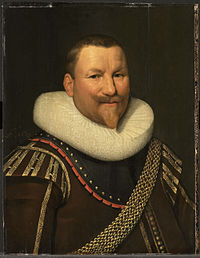
Matters became even worse for the Spaniards when the able privateer and
Admiral, Piet Heyn (who was also responsible for seizing the capital of
Portuguese Brazil), seized the entire Spanish treasure fleet in 1628. This
bankrupted Spain and filled Dutch coffers. Holland had rapidly expanded into
both the West and East Indies and wrested away control of most Portuguese
colonies to form a virtual monopoly of trade with the East. This monopoly
became so expanisve that it led the English Parliament to pass “The Navigation
Acts” prohibiting English merchants from shipping goods on Dutch ships or to
allow Dutch captains to fly English flags of convenience under English
shipping contracts. It futher required that these ships must be crewed by a
majority of Englishmen if the Captain, master or owner of the ship was Dutch.
These continuing acts led to more and more friction and were a key cause of
both the 1st and 2nd Anglo-Dutch Wars.
Birth of Corporate Finance and Dutch Wealth:
In the late 16th and early 17th centuries the Dutch – traditionally able
seafarers and keen mapmakers – began to trade with the Far East. As the
century wore on, they gained an increasingly dominant position in world trade,
a position previously occupied by the Portuguese and Spanish.
Several other factors contributed to the flowering of trade, industry, the
arts and the sciences in the Netherlands during this period. A necessary
condition was the supply of cheap energy from windmills and from peat, easily
transported by canal to the cities. The invention of the sawmill enabled the
construction of a massive fleet of ships for worldwide trading, for defense of
the republic’s economic interests by military means, and a major export
industry of supplying ships to other countries. This period came to be known
as the “Golden Age” for these reasons. By 1640 there were more ships in the
trading fleets of Holland than in all of England and France combined!
Banking was one of the young republic’s strong suits. This came about largely
as a result of war and natural geography. Antwerp had been Europe’s richest
city with the largest and richest concentration of bankers/banks in the world
prior to the Eighty Years War. When the Dutch revolt began, the fledgling
Dutch navy – largely consisting of pirates (or “sea beggars”), blockaded the
Scheldt river to prevent commerce and trade(goods) from flowing in or out.
This blockade lasted for decades and forced the Spaniards to build a large
canal into Oostend. However, the great Spanish held fortress cities of Oostend
and Dunkirk were both blockaded as well. Naval skirmishes were common outside
of these towns with local Flemish privateers/pirates loyal to the Spanish
cause (Dunkirkers/Dunkirk pirates) often sallying out to break the blockade so
they could prey on inbound Dutch convoys or assist Spanish relief squadrons
attempting to run the blockades into the cities.
With Antwerp in Spanish hands and trade almost completely choked off by the
Dutch navy, the next great trading city (with a large port and a confluence of
rivers flowing into it from within continental Europe) was Amsterdam. Most of
the bankers fled to Amsterdam after the Spanish sacked Antwerp. Many of these
bankers were Jews which were discriminated against horribly by Spain. With all
of the great bankers migrating and all of the trade moving north in and out of
the Maas and Rhine rivers – avoiding the conflict zones and blockades –
Amsterdam inevitably became the worlds next global entrepot and in the coming
century would far outshine Antwerp’s former greatness.
In 1602 the Dutch East India Company (Dutch: Verenigde Oostindische Compagnie
or VOC) was founded. It was the first-ever multinational corporation, financed
by shares that established the first modern stock exchange. This company
received a Dutch monopoly on Asian trade and would keep this for two
centuries. It became the world’s largest commercial enterprise of the 17th
century. Spices were imported in bulk and brought in huge profits – due to the
efforts and risks involved and seemingly insatiable demand. To finance the
growing trade within the region, the Bank of Amsterdam was established in
1609, the precursor to, if not the first true central bank in the world.
In addition “Futures” trading was born in the Netherlands of this time. It all
started with the tulip bulb. The Dutch now famous for their tulips originally
imported them from the east. The exotic flowers became a phenomona and sold
like wildfire. More and more varieties continued to be offered with differing
color combinations and and stripes/markings. Forecasting of new shipments with
descriptions of how they would appear started an exchange of purchased
promisory notes for X number of the new shipments of bulbs. These notes could
then be subsequently traded for even more money to others who were keen to own
the newest bulbs months before they arrived. Notes for certain extremely rare
and desireable color combinations of bulb soared in price. As Dutch botanists
and horticulturalists learned to cross breed tulips to achieve new
combinations themselves at home in Holland, the bulb trade exploded. During
the time of these first venture stock companies all manner of items and
forecasted profit began to be traded on sheets of paper (promisory notes),
sometimes years before company fleets would return home. This was the birth of
modern trading and venture capitalism.
The arts were greatly patronized in the 17th century Netherlands. Their composers
were not as well known and the music was less dramatic or embellished but still
quite beautiful and almost illustrates a kind of pragmatism. In the case of Wassenaer,
much of his music was written anonymously because he didn’t see it fitting for a
nobleman to be a composer – and really considered it more of a hobby.
Dutch Painting:
To this day the “Dutch Masters” are considered some of the greatest artists to
ever live. Men like Rembrandt, Backhuysen, Storck, Vermeer, Bosch, Ruisdael,
Claesz, and the family of Van de Veldes were not only prolific painters but
experts in their favored media and subjects. Rembrandt was as good at still
lifes as he was with landscapes, but he is best known for his great portraits
and portrait scenes. The Van de Veldes are still considered at the very top of
the genre for marine painting. They produced an almost photographic quality
record of ships and sea battles for that era. Much like later war
correspondents who would photograph events, the Van de Veldes accompanied the
Dutch Confederate Fleet into action and would make sketches and water colors
on the scene which would later become their larger than life paintings. Dutch
still-lifes are known to this day to have a realism that almost transcends the
photographic. Color, light, and reflection attain near perfection in many
pieces.
Indeed, foreigners remarked on the quality and enormous quantities of art
produced at the time, and the large fairs where paintings were sold at. It has
been roughly estimated that around 1.3 million Dutch pictures were painted in
the 20 years after 1640 alone. The volume of production meant that prices were
exceptionally low, except for the best known artists. The distribution of
pictures was very wide – “yea many tymes, blacksmithes, cobblers etc., will
have some picture or other by their Forge and in their stalle. Such is the
generall Notion, enclination and delight that these Countrie Native have to
Painting” from the report of an English traveller in 1640. There were for
virtually the first time many professional art dealers, several also
significant artists, like Vermeer and his father, Jan van Goyen and Willem
Kalf. Rembrandt’s dealer Hendrick van Uylenburgh and his son Gerrit were among
the most important.
Everyone wanted a painting to show off their success (just a little) in a
distinctly Dutch way. The Dutch who frowned upon excess or “showing off” are
usually depicted in dark hues and rarely wearing bright colors. This is
extraordinary in that this trend was not just among the common middle/burgher
class, but can also be seen in the rich as well – including women. Often a
painting depicting a nobleman or rich merchant will give only minor hints of
his high station – small clues to his class and/or success can be seen in a
fine lace collar or ornate sword hilt. There was an almost guilt experienced
by successful Dutchmen in being so rich and successful, when cast in the
shadow of the Dutch devotion to their egalitarian, frugal and modest ways set
forth in their Protestant Calvinist religious beliefs. A painting was not
considered sacralige if it was not the object of veneration or worship. While
paintings (especially of religious themes) were not approved of in any church,
those of everyday scenes or family portraits were considered just fine if they
were hung in the home. They were seen as a good investment and money well
spent on something of value that could be enjoyed – but that did not come off
as overly pompous or “showing off” too badly.
Science, Philosophy and Education:
The Dutch Republic arguably had the distinction of possessing the greatest
universities, scientists and thinkers (confined to this relatively small geography) during this
short period than in any other place in history
Anglo-Dutch Wars:
In 1650, the Dutch Prince-Stadtholder of the Netherlands William II died, and
several months after his heir William III was born. Johan de Witt became the
acting ruler/steward of the Republic of the United Provinces at that time –
appointed the title of “Grand Pensionary” in 1653 he sought to promote the
prosperity of the trading companies and Dutch merchant oligarchy. He caused
the Princes of Orange to waive their hereditary rights to rule the country and
temporarily abolished the Stadtholder position as the office of executive
power in Netherlands.
DeWitt was an extremely shrewd executive and used every trick at his disposal
to beat the English during the trade wars. English trade was all but
completely crippled by both the well defended ironclad monopoly of trading
colonies/spice islands, and also by agressive Dutch privateering globally. In
home waters the first battles of the Second Anglo-Dutch War were inconclusive,
however the Dutch later gained the upper hand in the large fleet actions. This
was prominently due to lessons learned in the loss of the first Anglo-Dutch
war in the 1650s. The Dutch no longer relied on heavily armed merchant ships
for their navy. The new Dutch navy was both professional, led by some of the
best and most experienced admirals on earth and was a large well supplied and
equipped fleet of the fastest, latest warships which even though smaller than
the English capital ships were both extremely durable and armed with larger
guns…36 pounders vs the English 32 pounders.
Michiel de Ruyter See my article on him here: DeRuyter
Menno, Baron van Coehoorn (1641 – 1704)
Dutch soldier and military engineer. He made a number of influential weaponry
innovations in siege warfare and fortification techniques. He was also known
as the “Dutch Vauban”, after his famous French counterpart, Sébastien Le
Prestre de Vauban.
The circumstances of the time and the country turned Coehoorn’s attention to
the art of fortification, and the events of the late war showed him that
existing methods could no longer be relied upon. Coehoorn gained most of his
knowledge and insights on the building of fortification by having to capture
many of them himself. His first published work, Versterchinge de Vijfhoeks met
alle syne Buytenwerken (Leeuwarden, 1682), at once aroused attention, and
involved the author in a lively controversy with a rival engineer, Louys Paan
(Leeuwarden, 1682, 1683; copies are in the library of the Dutch Ministry of
Defence). The military authorities were much interested in his work, and
entrusted Coehoorn with the reconstruction of several fortresses in the
Netherlands. This task he continued throughout his career and his experience
made him the worthy rival of his great contemporary Vauban. He formulated his
ideas a little later in his chief work, New fortress Construction (Nieuwe
Vestingbouw op een natte of lage horisont, Leeuwarden, 1685), in which he laid
down three systems, the characteristic feature of which was the multiplicity
and great saliency of the works, which were calculated and in principle are
still eminently suited for, flat and almost marshy sites such as those in the
Low Countries. Essential to his new approach was the ability to fight an
active defence on the outer shores of the enveloping ditch, made possible by
constructing an extra protective wall around the fortification.
He borrowed many of the details from the works of his Dutch predecessor
Freytag, of Albrecht Dürer, and of the German engineer Speckle, and in general
he aimed rather at the adaptation of his principles to the requirements of
individual sites than at producing a geometrically and theoretically perfect
fortress. Throughout his career he never hesitated to depart from his own
rules in dealing with exceptional cases, such as that of Groningen. Subsequent
editions of Nieuwe Vestingbouw appeared in Dutch (1702, and frequently
afterwards), English (London, 1705), French (Wesel, 1705), and German
(Düsseldorf, 1709). Coehoorn’s individual assessment of each fortification and
focus on existing natural advantages and disadvantages is the main difference
in thinking from Vauban, who adhered more strictly to mathematics and standard
fortifications.
The fortifications of Coehoorn at Bergen op Zoom
In the War of the Grand Alliance (1689–1697) Coehoorn served as a brigadier.
At the battle of Fleurus he greatly distinguished himself, and he defended
Namur, a fortress of his own creation, when it was besieged by the French in
- Namur was taken by Vauban; but the Dutch engineer had his revenge three
years later in the Siege of Namur of 1695, when van Coehoorn retook Namur,
despite Vauban having spent the interval improving the defences with his
skill. Coehoorn became lieutenant-general and inspector-general of the
Netherlands fortresses. He commanded a corps in the army of the Duke of
Marlborough from 1701 to 1703, and in the constant siege warfare of these
campaigns in the Low Countries his technical skill was of the highest value.
The swift reduction of the fortress of Bonn and the siege of Huy in 1703 were
his crowning successes. He was on his way to confer with The Duke of
Marlborough prior to the famous campaign culminating in the Battle of
Blenheim, when he died of a stroke.
Hugo Grotius (1583 – 1645),
Dutch jurist. Along with Alberico Gentili and Francisco de Vitoria, he laid
the foundations for international law, based on natural law. A teenage
intellectual prodigy, for his involvement in the intra-Calvinist disputes of
the Dutch Republic, he was imprisoned and then escaped hidden appropriately in
a chest of books. He wrote most of his major works in exile in France.
It is thought that Hugo Grotius was not the first to formulate the
international society doctrine, but he was one of the first to define
expressly the idea of one society of states, governed not by force or warfare
but by actual laws and mutual agreement to enforce those laws. As Hedley Bull
(Hugo Grotius and International Relations, 1992) declared: “The idea of
international society which Grotius propounded was given concrete expression
in the Peace of Westphalia, and Grotius may be considered the intellectual
father of this first general peace settlement of modern times.”
Additionally, his contributions to Arminian theology provided the seeds for
later Arminian-based movements, such as Methodism and Pentecostalism and he is
acknowledged as a significant figure in the Arminianism-Calvinism debate.
Because of his theological underpinning of free trade, he is also considered
an “economic theologist”.
René Descartes (1596 – 1650)
Some would say I need to include him with the French geniuses because he was
indeed French. However, he spent the majority of his life in the Dutch
Republic – this is where he both taught as a great scholar and professor at
the University of Leiden, and also where he made his observations,
discoveries, and wrote his books. Descartes was one of the great philosophers,
mathematicians, and scientists of the modern era.
He has been dubbed the father of modern philosophy, and much subsequent
Western philosophy is a response to his writings, which are studied closely to
this day. In particular, his Meditations on First Philosophy continues to be a
standard text at most university philosophy departments. Descartes’s influence
in mathematics is equally apparent; the Cartesian coordinate system — allowing
reference to a point in space as a set of numbers, and allowing algebraic
equations to be expressed as geometric shapes in a two- or three-dimensional
coordinate system (and conversely, shapes to be described as equations) — was
named after him. He is credited as the father of analytical geometry, the
bridge between algebra and geometry, crucial to the discovery of infinitesimal
calculus and analysis. Descartes was also one of the key figures in the
scientific revolution and has been described as an example of genius.
Descartes refused to accept the authority of previous philosophers, and
refused to trust his own senses. He frequently set his views apart from those
of his predecessors. In the opening section of the Passions of the Soul, a
treatise on the early modern version of what are now commonly called emotions,
Descartes goes so far as to assert that he will write on this topic “as if no
one had written on these matters before”. Many elements of his philosophy have
precedents in late Aristotelianism, the revived Stoicism of the 16th century,
or in earlier philosophers like Augustine. In his natural philosophy, he
differs from the schools on two major points: First, he rejects the splitting
of corporeal substance into matter and form; second, he rejects any appeal to
final ends—divine or natural—in explaining natural phenomena.[9] In his
theology, he insists on the absolute freedom of God’s act of creation.
Descartes laid the foundation for 17th-century continental rationalism, later
advocated by Baruch Spinoza and Gottfried Leibniz, and opposed by the
empiricist school of thought consisting of Hobbes, Locke, Berkeley, and Hume.
Leibniz, Spinoza and Descartes were all well versed in mathematics as well as
philosophy, and Descartes and Leibniz contributed greatly to science as well.
His best known philosophical statement is “Cogito ergo sum” (French: Je pense,
donc je suis; I think, therefore I am), found in part IV of Discourse on the
Method (1637 – written in French but with inclusion of “Cogito ergo sum”) and
§7 of part I of Principles of Philosophy (1644 – written in Latin).
Franciscus Sylvius (1614 – 1672)
Dutch physician and scientist (chemist, physiologist and anatomist) who was an
early champion of Descartes’, Van Helmont’s and William Harvey’s work and
theories. He was one of the earliest defenders of the theory of the
circulation of the blood.
In 1669 Sylvius founded the first academic chemical laboratory . For this
reason, the building in which much of the Leiden University chemistry and
natural science faculties are housed has the name Sylvius Laboratory. His most
famous students were Jan Swammerdam, Reinier de Graaf, Niels Stensen and
Burchard de Volder.
He founded the Iatrochemical School of Medicine, according to which all life
and disease processes are based on chemical actions. That school of thought
attempted to understand medicine in terms of universal rules of physics and
chemistry. Sylvius also introduced the concept of chemical affinity as a way
to understand the way the human body uses salts and contributed greatly to the
understanding of digestion and of bodily fluids. The most important work he
published was Praxeos medicae idea nova (New Idea in Medical Practice, 1671).
The engraving by J. Voort Kamp published in 1641 that led to the lateral
sulcus being named after Franciscus Sylvius
He researched the structure of the brain and was credited as the discoverer of
the cleft in the brain known as Sylvian fissure by Caspar Bartholin in his
1641 book Casp. Bartolini Institutiones Anatomicae[5] In this book, it is
noted that in the preface that “We can all measure the nobility of Sylvius’s
brain and talent by the marvelous, new structure of the brain” And also, “In
the new images of the brain, the engraver followed the design and scalpel of
the most thorough Franciscus Sylvius, to whom we owe, in this part, everything
that the brain has the most, or the most wonderful of”.
Christiaan Huygens (1629 – 1695)
Prominent Dutch mathematician and scientist. He is known particularly as an
astronomer, physicist, probabilist and horologist. Huygens was a leading
scientist of his time. His work included early telescopic studies of the rings
of Saturn and the discovery of its moon Titan, the invention of the pendulum
clock and other investigations in timekeeping. He published major studies of
mechanics and optics, and a pioneer work on games of chance. In addition,
Huygen’s body of work and formulas in the discipline of physics were the first
known accurate mathematical notations and models concerning what we now know
as the Laws of motion, impact and gravitation. Huygens’ time pieces (clocks and
watches – first patented in 1675) contained many new break-throughs at the
time and are the forerunners of many modern descendents.
https://www.youtube.com/watch?v=TMet9fwerF8
Here’s the whole Episode 6 “Traveller’s Tales” Absolutely brilliant!
SWEDEN
It seems to me like every brief history of the 17th century leaves Sweden out
as nothing more than a footnote. It can’t be completely ignored and has to be
mentioned in the history books “here and there” to fill in essential holes
that would otherwise exist in a larger historical understanding – however, few
English speaking historians seem to take the time to actually cover it to even
a slight or deserved degree. To me Sweden simply cannot be ignored. She WAS
indeed one of the “super powers” of the Europe of her time and involved in
numerous important conflicts of the Golden Age. In several of the larger
conflicts she was a key and essential player – indeed during the Thirty Years
War it was Sweden that saved the protestant cause and turned the tables
against the might of the Catholic League. Sweden struggled throughout the 17th
century to become one of the great world powers and – in a somewhat similar
timeline to France – was thwarted in these endeavors by large alliances formed
specifically to prevent Sweden from becoming a dominant power on par with
England or France. Sweden also had her fair share of great men during this
era. I apologize because I am also neglecting to give Sweden her due in the
detail I have on the countries above, however I will address/examine a couple
of items of interest.
Sweden’s army adopted the Dutch model of Prince Maurice and indeed expanded
and improved upon it. Sweden’s army was quite possibly the most disciplined
and professional of the age. It became the model to copy by the 1650s. At sea,
Sweden’s navy had participated (and was dominant) in many conflicts in the
16th and 17th centuries. Simply study the Scanian Wars to understand how
large, long term and complex these struggles were. Despite being a Protestant
power, and being a leader in the arms trade/cannon production (founded by the
Dutch), by the middle of the 17th century, Sweden found herself engaged in
conflicts against the Netherlands who took the side of Denmark. Sweden’s navy
was a fascinating hybrid in that although the DUtch model of command and naval
construction was the norm, they added many English practices both in ship
development and in ship handling/drill.
One of the things I have always personally liked about the Swedes are that
they were extremely literate and had spilled onto the scene of early modern
Europe – not as some backwater – but as a major developed cosmopolitan and
educated power. Look at the great Gustavus Adolphus who was so moved by the
Reformers that he joined them and saved the entire Protestant movement from
certain destruction if he had not intervened. He was killed acting as the
defender of the Protestant cause at the monumental Battle of Lützen. Although
interred in a great tomb in Stockholm, his sword was left in Wittenburg as
well as a monument to him adjacent the grave of Martin Luther at Wittenburg.
The King’s successor Queen Christina was one of the most fascinating women of
history. She was known as the scholar queen and read constantly. The most
important single thing Christina was interested in as her armies overran city
after city in central Europe was not victories, gold or glory – but books.
Christina gave her generals orders to carefully loot the libraries of the
conquered places and send the books carefully back to Stockholm for her to
examine. Indeed, Stockholm is a great repository of knowledge to this day
because of the queen. Interestingly enough, numerous countries have requested
the return of specific rare and valuable books taken as spoils of war. Sweden
has declined all requests and considers them their own after 400 years.
Christina would not go along with social norms (she commonly dressed as a man
and hunted as well) nor her duties requiring her to marry and bare offspring.
On the contrary her disdain for convention caused her to abdicate the kingdom
to her cousin (a German Wittelsbach – Bavarian Kings) King Gustav X. Christina
so wanting access to the greatest library on earth, became Roman Catholic and
took up residence in the Vatican to study. The pope described Christina as “a
queen without a realm, a Christian without faith, and a woman without shame”.
She spent many years in study in Rome and is one of the only women buried in
the Vatican Grotto.
Sweden my friends is worth the time to study. Her great persons of note are
every bit as interesting as the others I mention above. However, its time to
end this article now.
End of the Golden Age:
The end of the age was marked by a decline in the Dutch military machine that
had been so incredibly active the entire century before. The navy was no longer
seen of great importance. If you look at paintings from the time of William and
Mary one sees ships flying the colors of both countries simultaneous. King
William built up the English Navy to guard the trade of both the Dutch and
English states. The Dutch always saavy to make a profit, saw a peacetime
dividend – and thus, built fewer and fewer vessels of war as time went on –
and concentrated on building trading ships instead. Indeed when the Dutch
were called upon to honor the decades old alliance with England during the
Georgian age in the mid 18th century, they were asked to provide a squadron
of 20 warships to assist England in an endeavor against Spain. The Dutch
could send only four ships and they were old and nearly unfit. Their
commander had not been to sea in over 20 years. This sharp Dutch decline
ran in a directly counter direction to an unstoppable English(British after
the Act of Unions 1714) explosion onto the world scene.
….And now back to the reasons I mentioned at the beginning of this article – concerning
that this time period is not considered to be an “Golden Age” by the Brits (who seem to be
quite alone in this boat). The previous paragraph is one obvious instance of the “why”
– one would much rather admire a society coming into its zenith and actions thereafter
than the time preceding (regardless of how grand, earthshaking and turbulent).
The Royal Navy of the 18th century is almost an object of worship to many Anglophiles and
students of history. Indeed it is both a formidable and admirable edifice and immeasurable
volumes of narrative admiration have been already been written elevating Nelson and Britain’s
actions during the Napoleonic Wars to Olympian heights.
However, I think this is only one reason. The other is far more seedy and
embarrassing. The 18th century into the 19th and finally into the Victorian era became
increasingly a time of prim and proper virtue, morality and behavior. “Stiff
upper lip” became not just a phrase but a way of living. It was improper to
show weakness or anything even slightly resembling weakness. Anything unsavory
in the public view or even just to ones own family or neighbors should and
would be dutifully ignored. It was better to shovel anything that smelled even
slightly “under the rug”, as it were. It’s interesting that this practice has
been continually followed from thereafter until modern times, even though all
that stuff under the rug is now just clearly becoming unbearably RIPE at this
point.
Charles II’s court was the model of liberality and decadence. Despite all of
its greatness and great men, it was a model of excess and carnality. Add to
this that the great and powerful English military machine not only failed to
subdue its small neighbor across the channel, and in a complete “turnaround”
was utterly defeated by them in dozens of battles around the globe and in two
major wars, and one begins to get that special rug smell. In both of these
wars England was forced to her knees in coming to the peace table.
In the case of the 2nd Dutch War, her capital ships and navy yards were
destroyed in view of the nations own capitol and the flagship seized as spoils
of war. Humiliating doesn’t begin to describe this chapter in English history.
Regardless of all of the incredible notable people, great victories,
achievements and discoveries that I described above, (as my old military
mentors used to say) “a thousand atta-boys can be wiped out with just one big
AH S&it”. Add to this a great plague and the great London fire and there is
the frosting on top.
This time became an embarrassment to the British because of these unsurpassed
losses – historical egg on the face. When you consider that many of England’s
greatest naval victories during the Golden Age were achieved by nothing more
than “pirates”, it just makes matters all the worse. Why – two of Englands
greatest admirals – Myngs and Spragge had both been infamous pirates earlier
in their careers. This is something that would NEVER have been tolerated or
even considered in Nelson’s navy.
It makes matters all the worse when you consider that both of these great
men lost their lives to the Dutch in epic battles. Men like Rochester became
an embarrassment and indeed his books of prose were banned during the 18th
century and into the Victorian era.
So a quick analysis brings us to the conclusion that the reason Britain
refuses to acknowledge this time as a Golden Age, or indeed “THE” Golden Age,
(even though all of the other great European powers of the time do regard it
as thus) is simply because they would quite rather ignore it now instead. This
seems a bit ignominious and unfair when you consider that it was the actions
of the great men of this time that allowed Britain to become the great empire
she is known for now in the century following.
So the next time you wonder about why there are so many movies, series, and
novels in English about Aubrey, Hornblower, Sharp’s Rifles, etc, etc ,etc. and
few movies offered about the century prior – now you know.
…and knowing is half the battle. What strikes me most is that the people of
this time just seem so much more human, and……real.
MK (A.S.)
by modernknight1 with no comments yet.

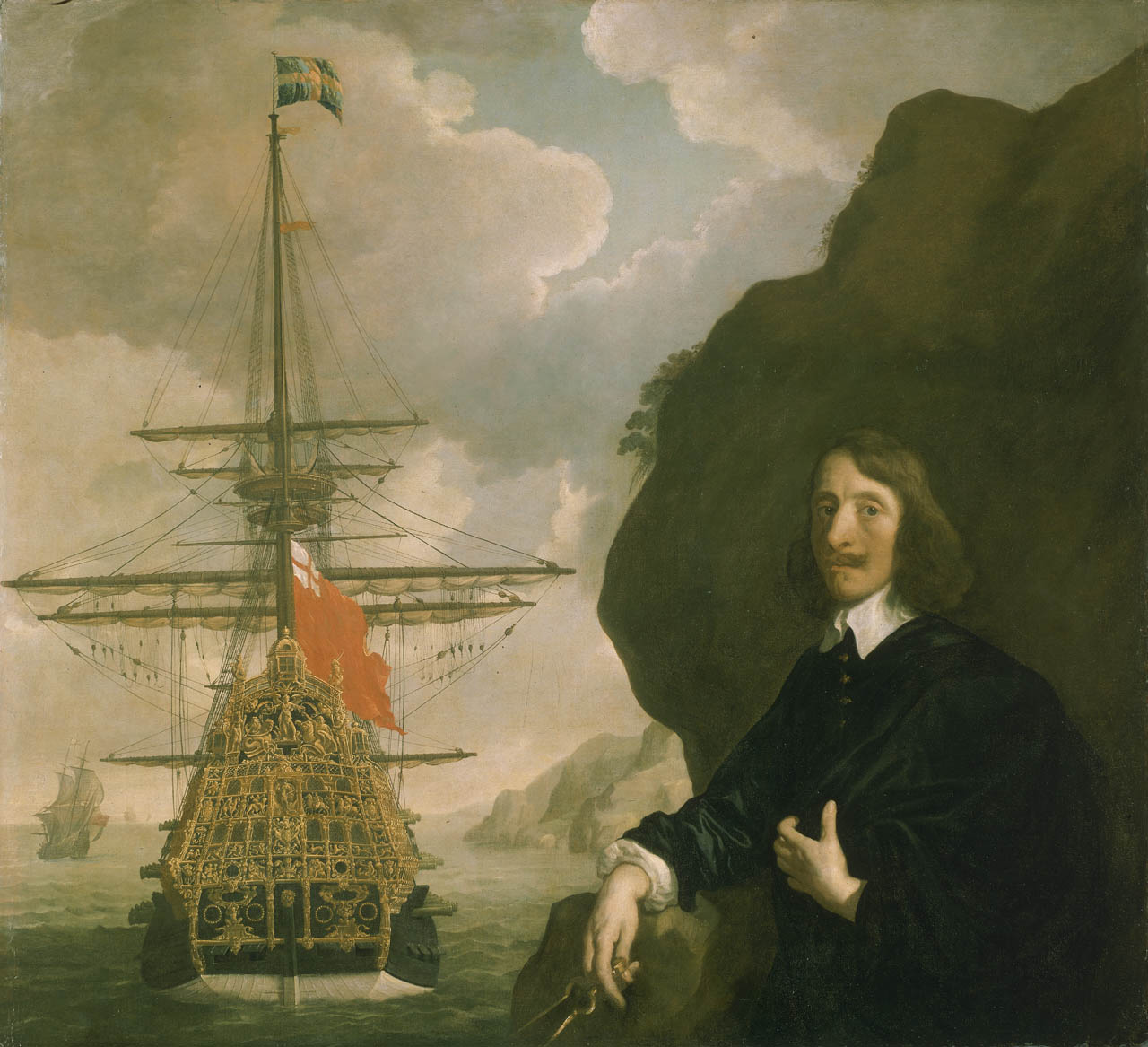
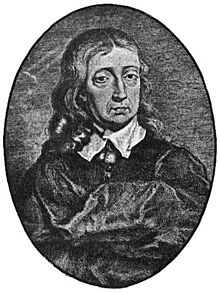

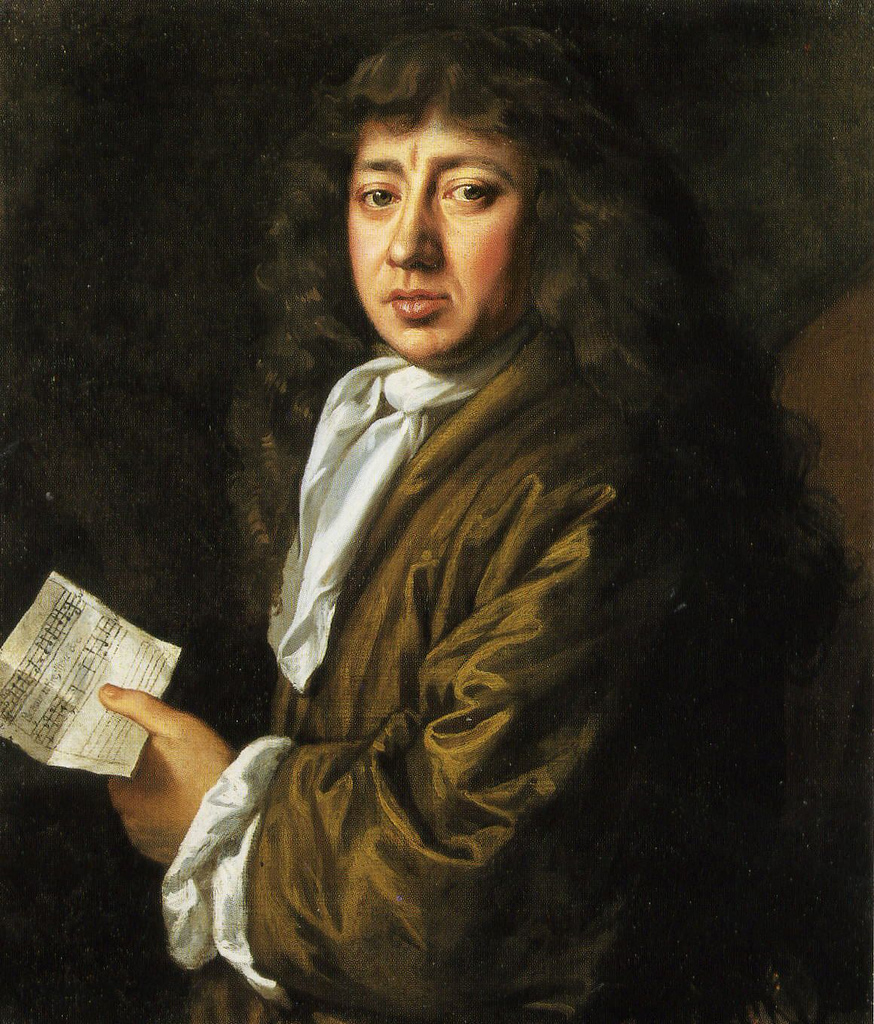
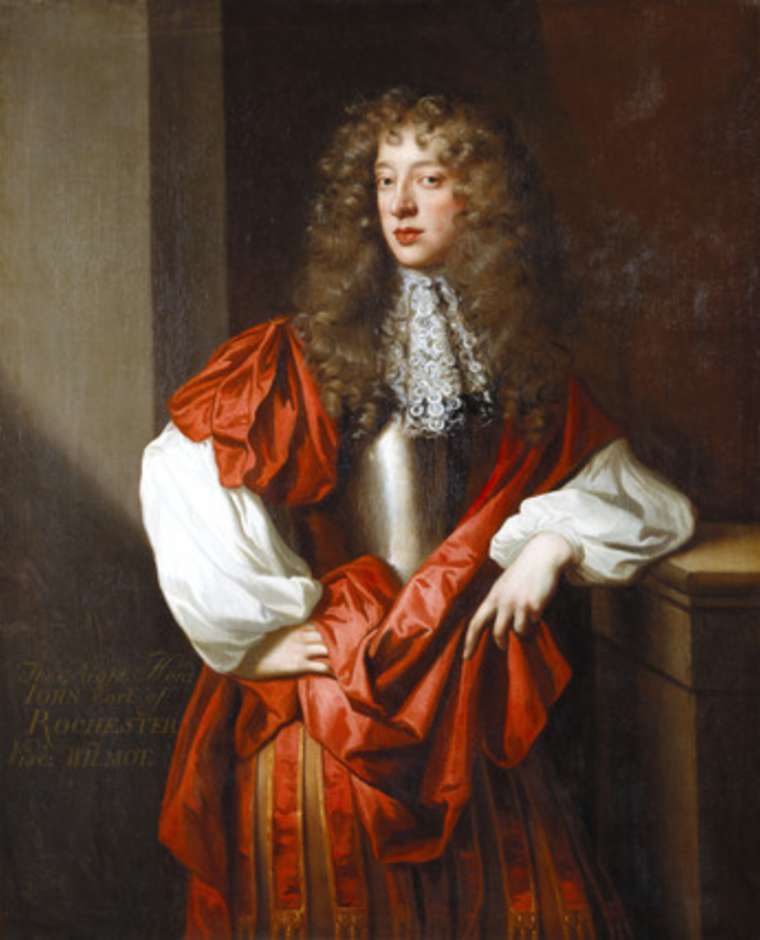
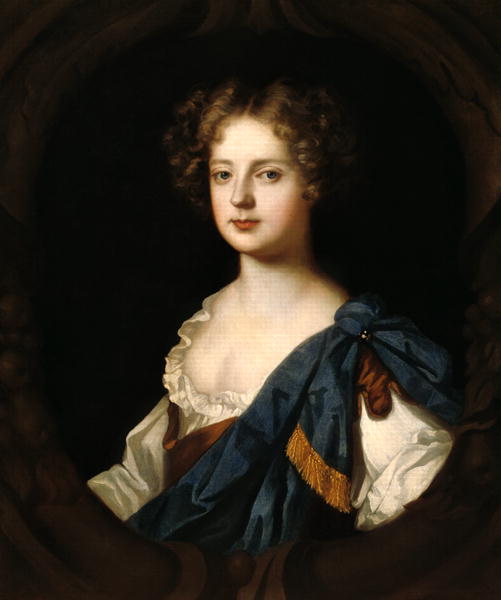
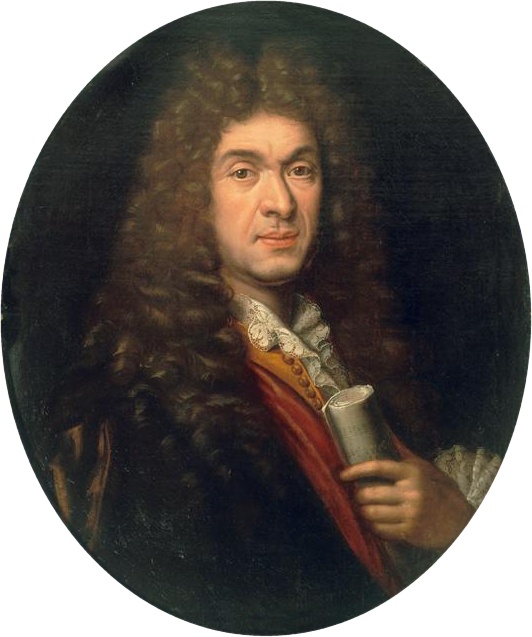
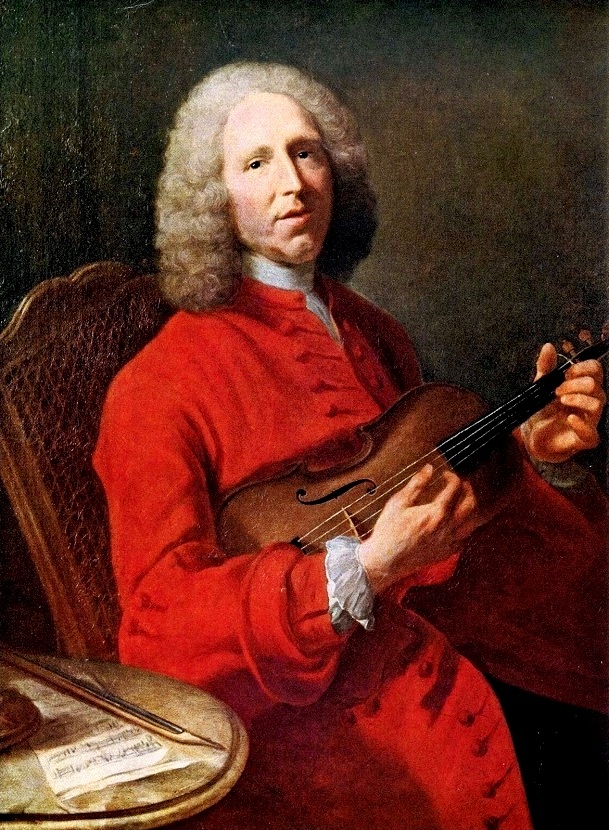
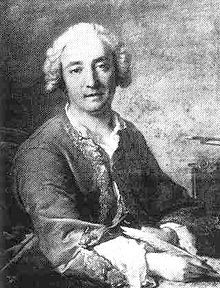

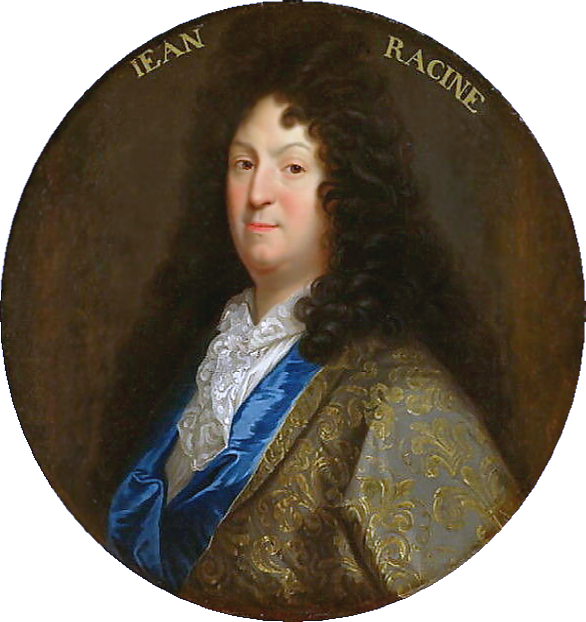

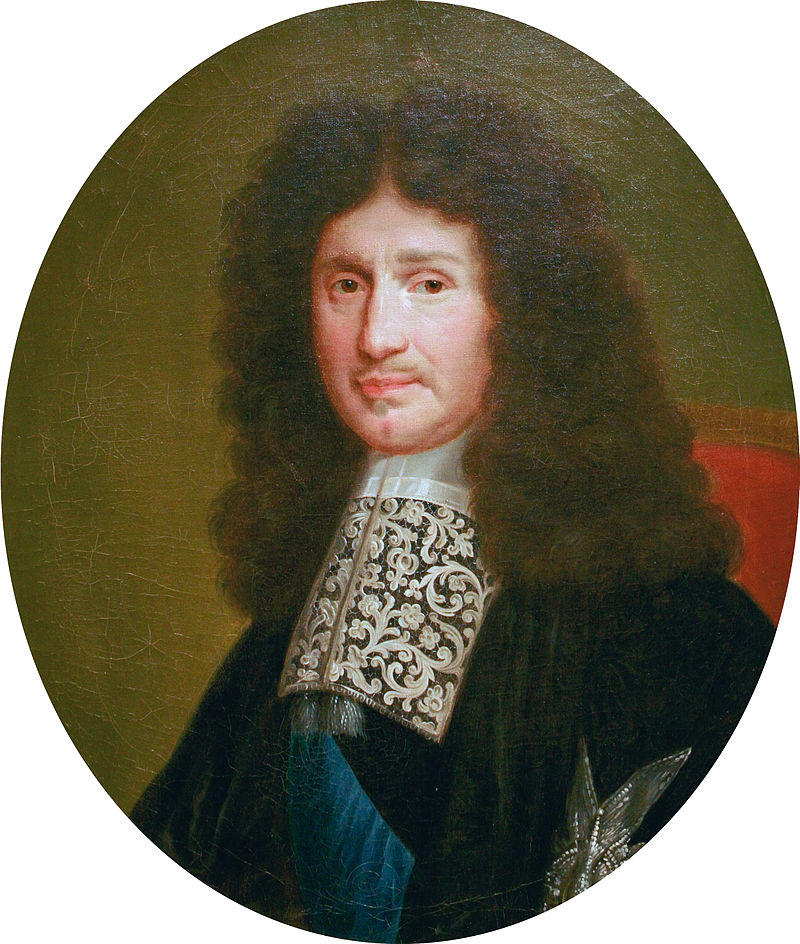
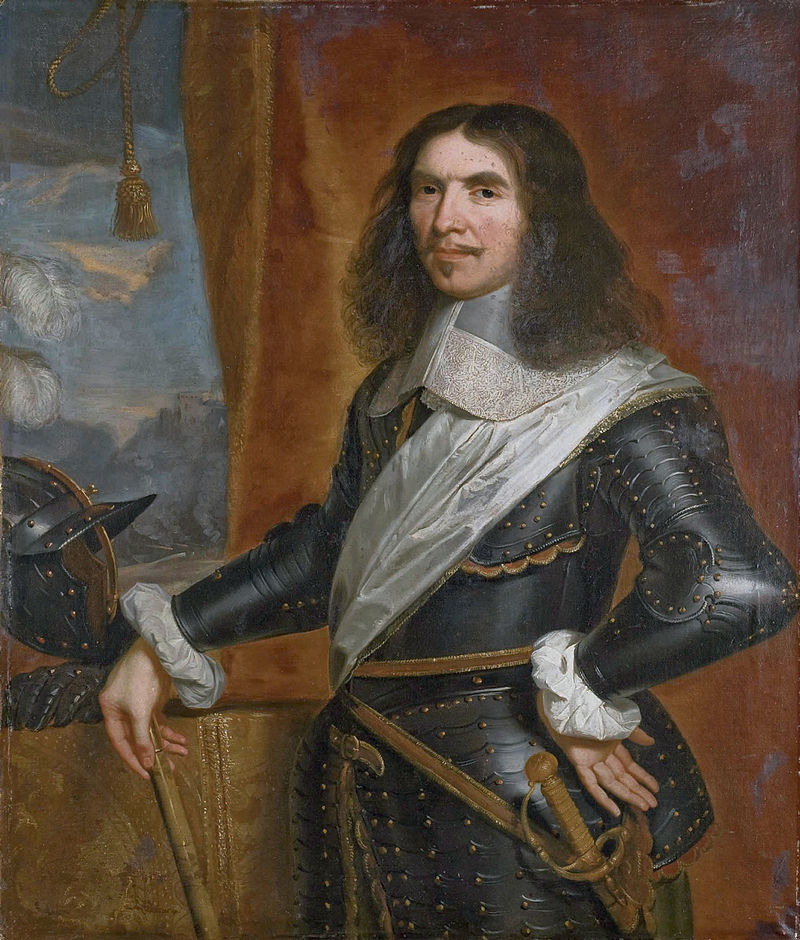
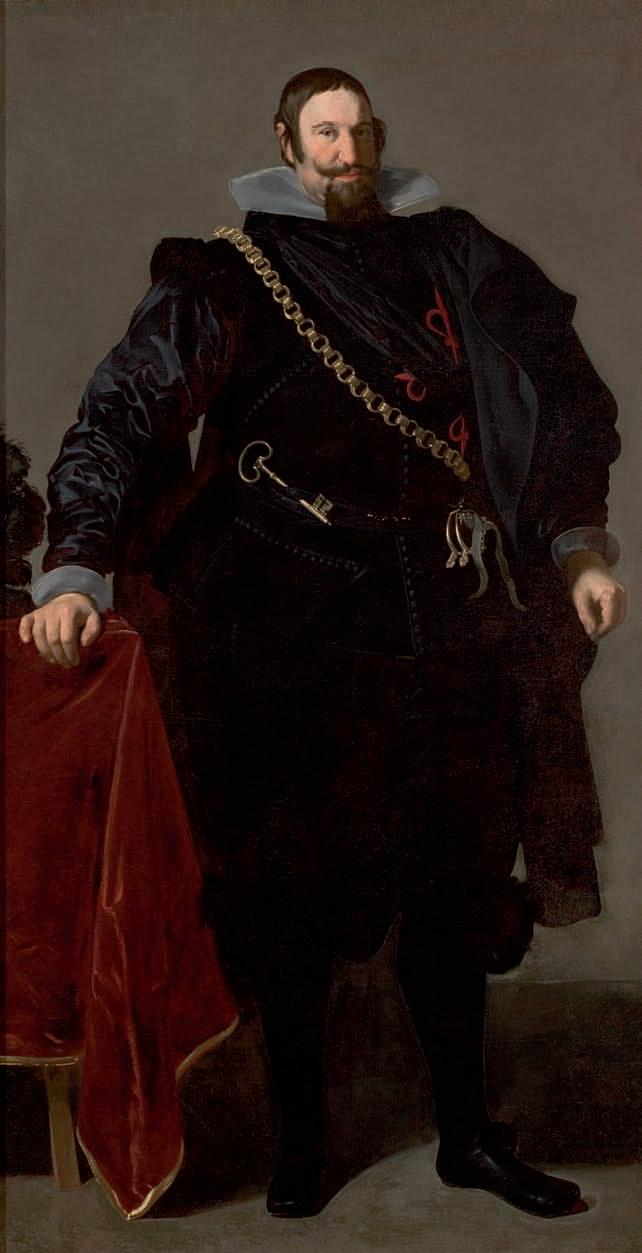
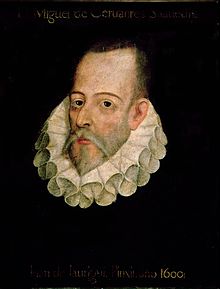
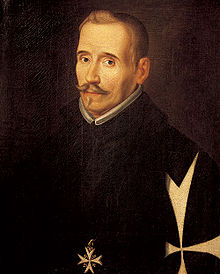
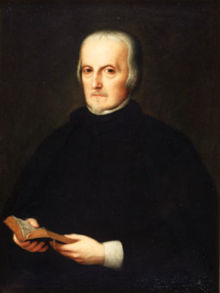
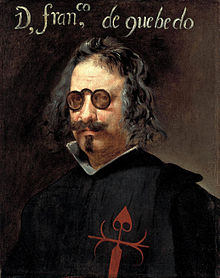
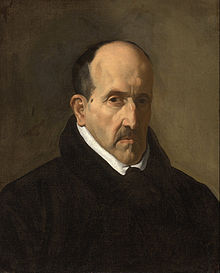
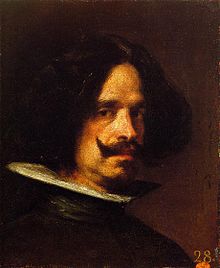
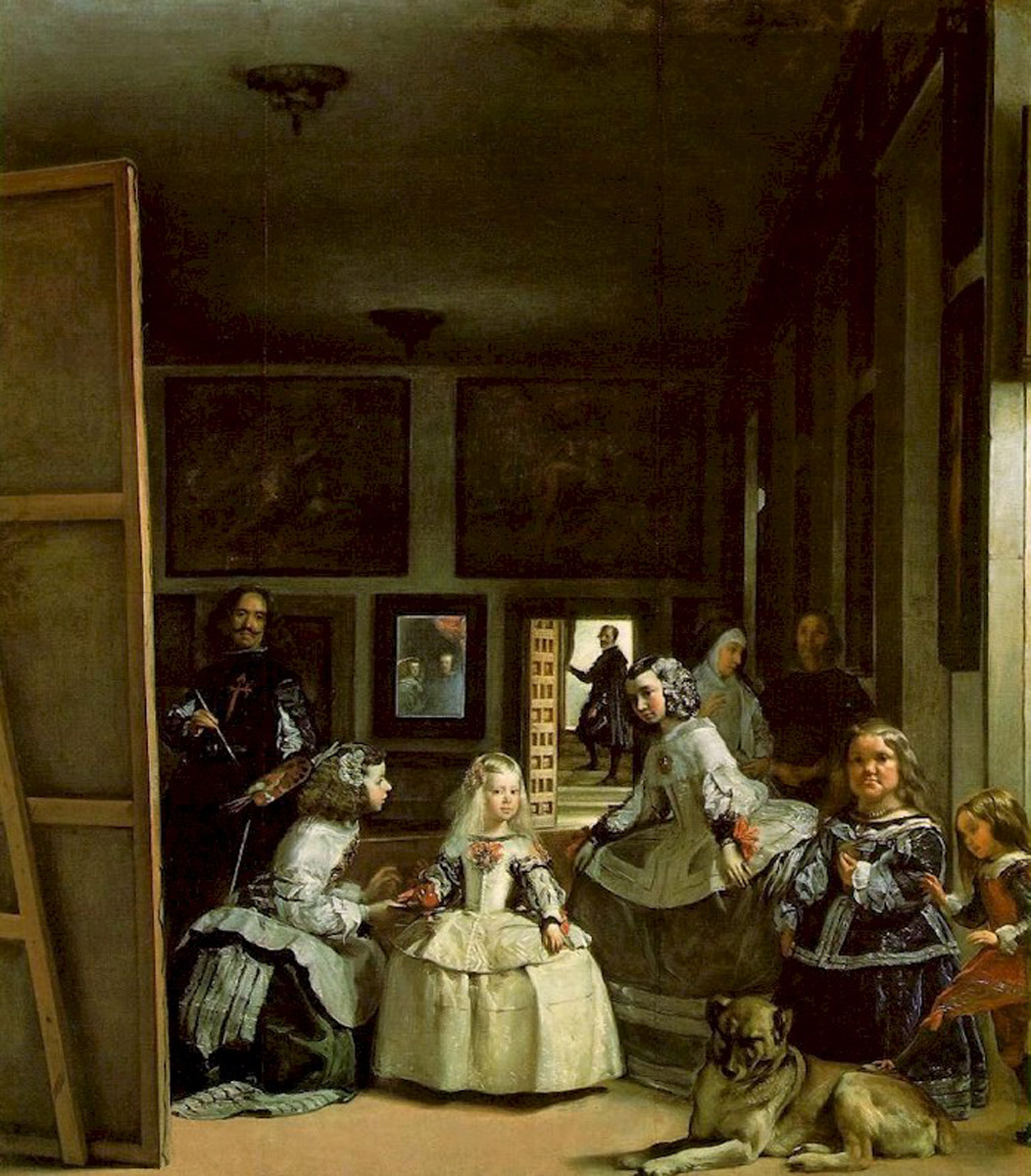
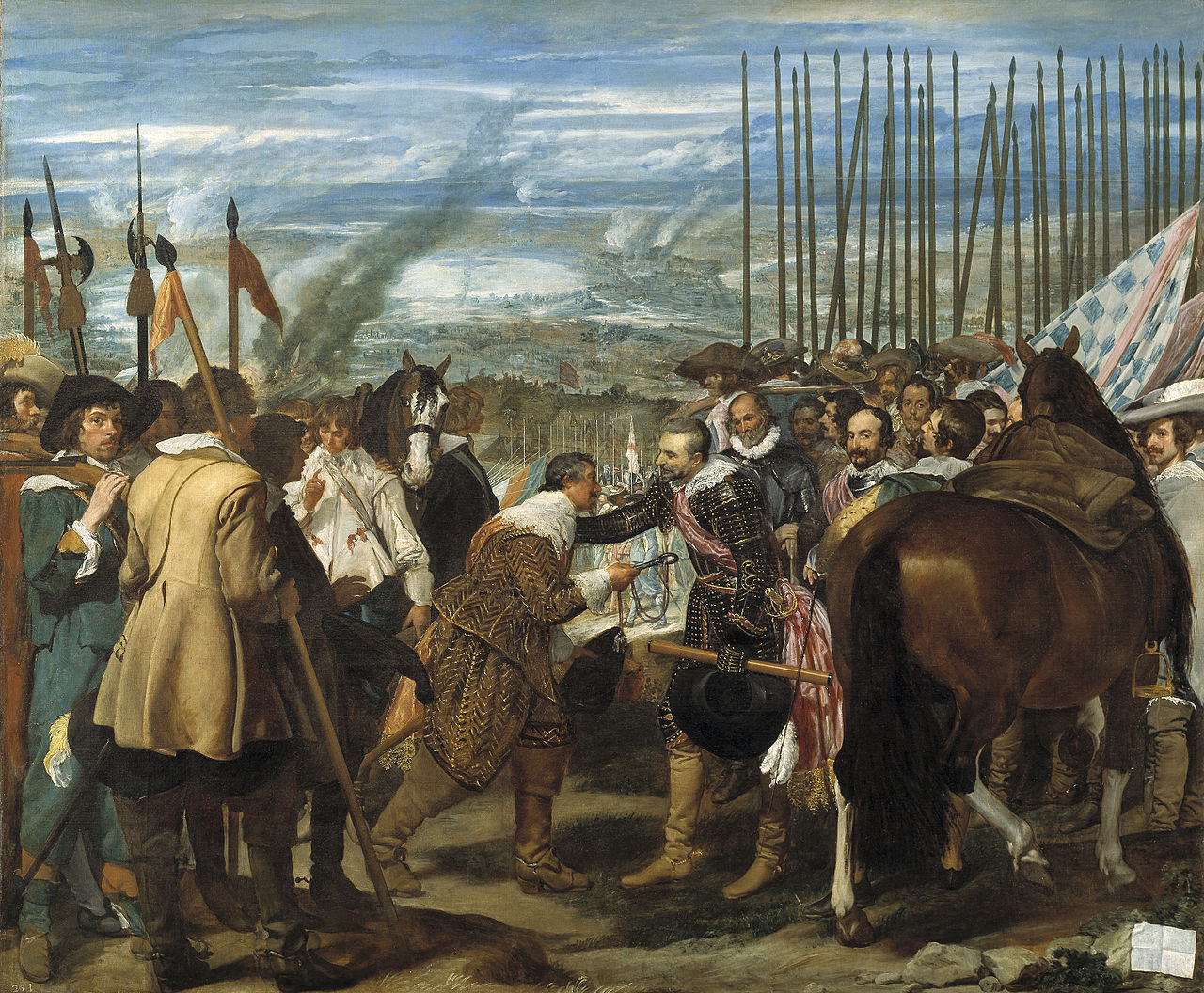
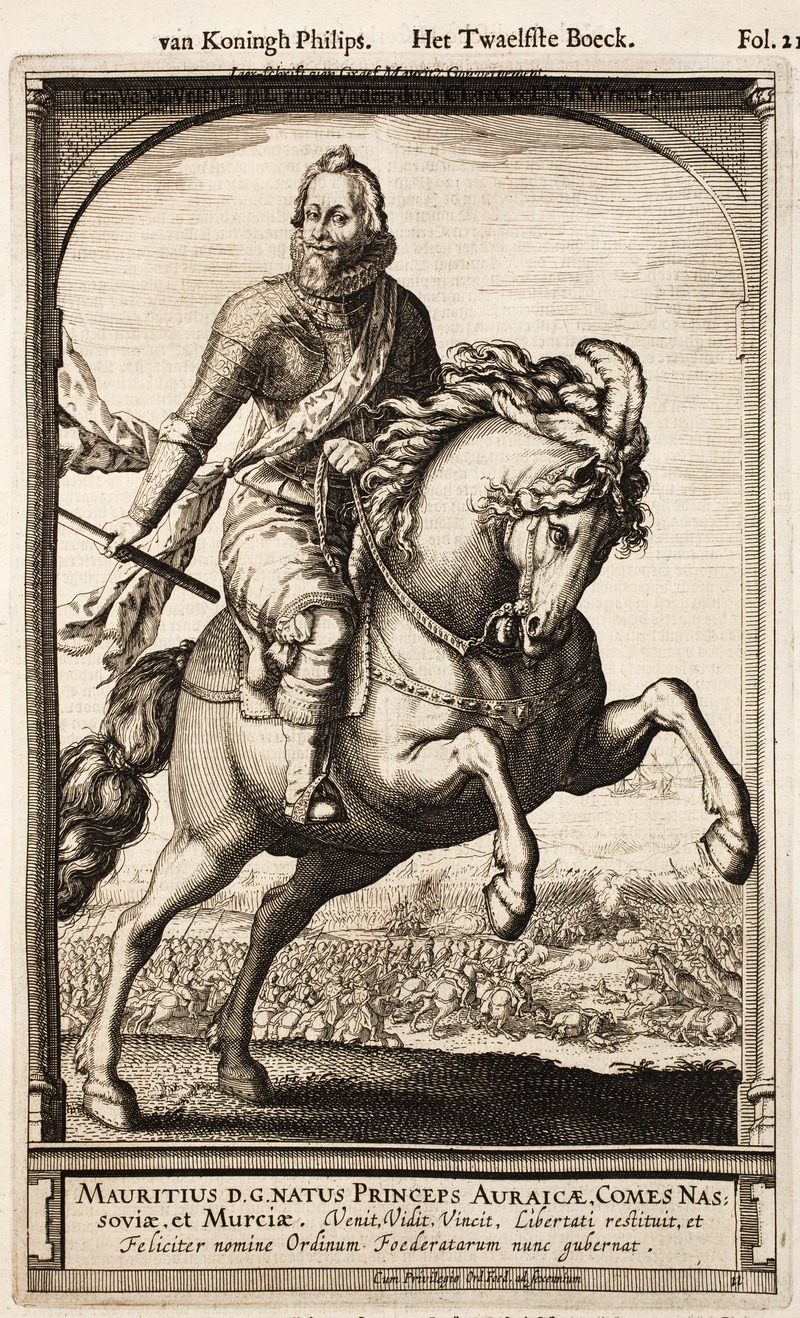
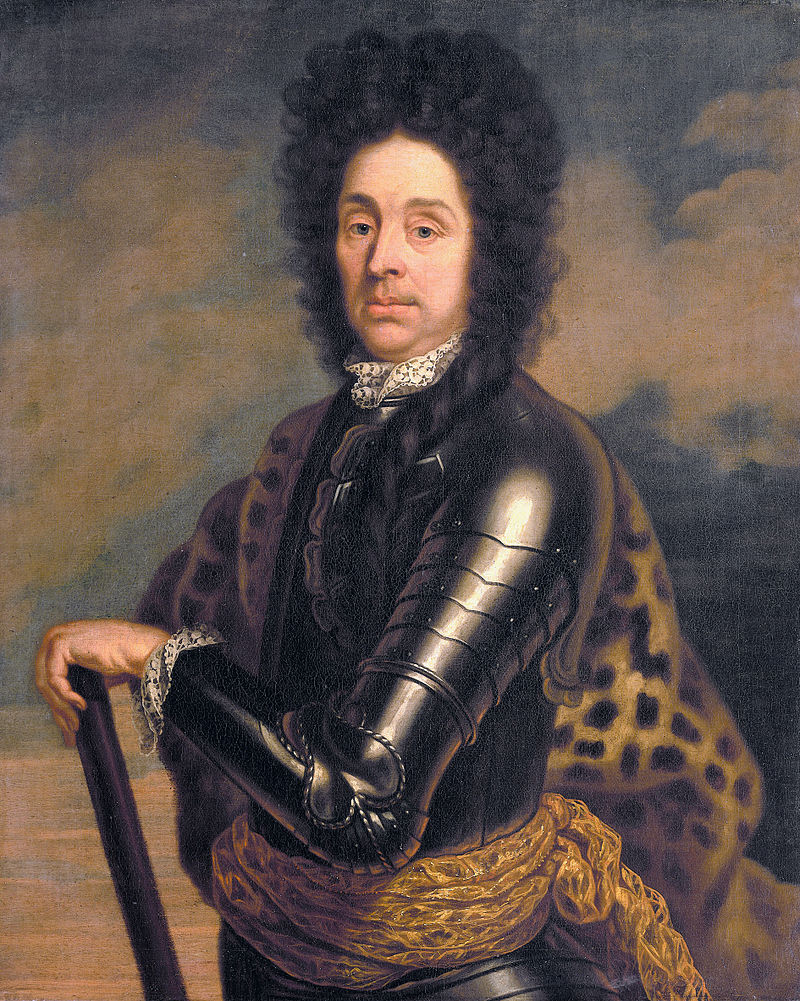
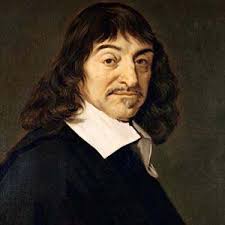
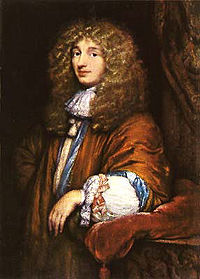
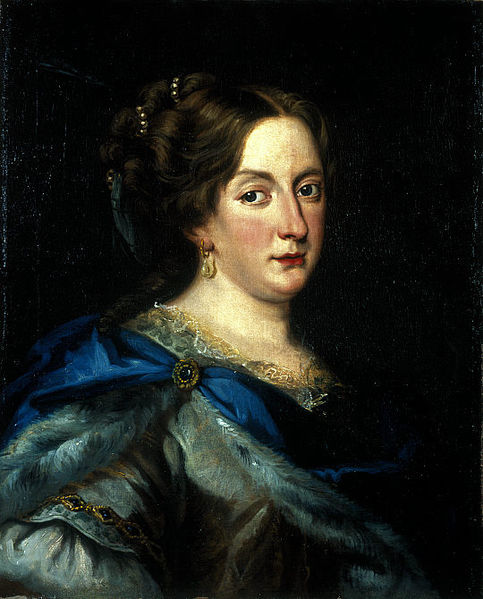
Leave a Reply
You must be logged in to post a comment.